- 注册
- 登录
- 小程序
- APP
- 档案号

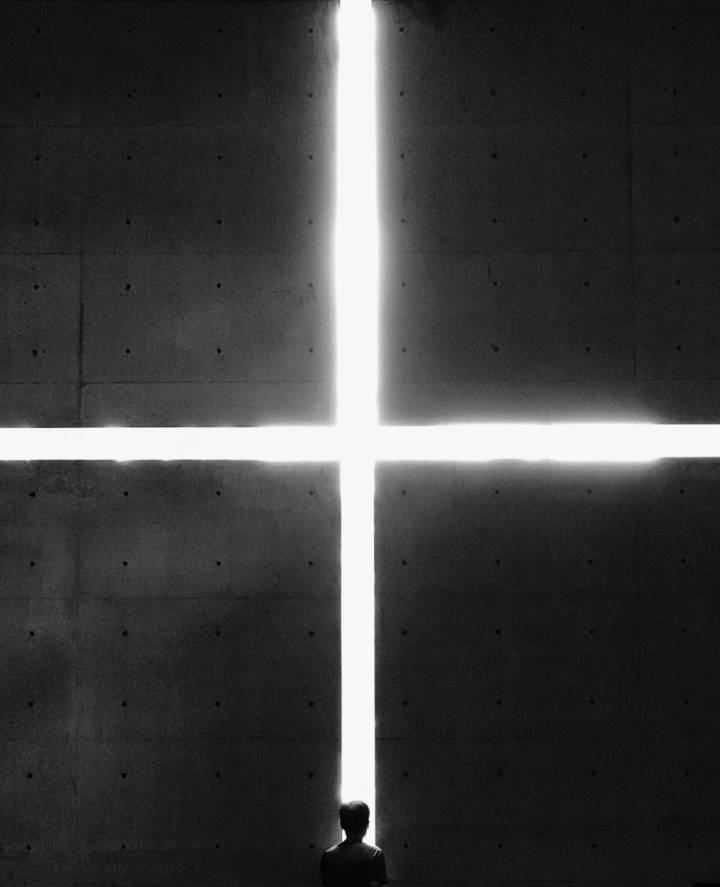
建筑现场 · 2023-01-11 18:14:04
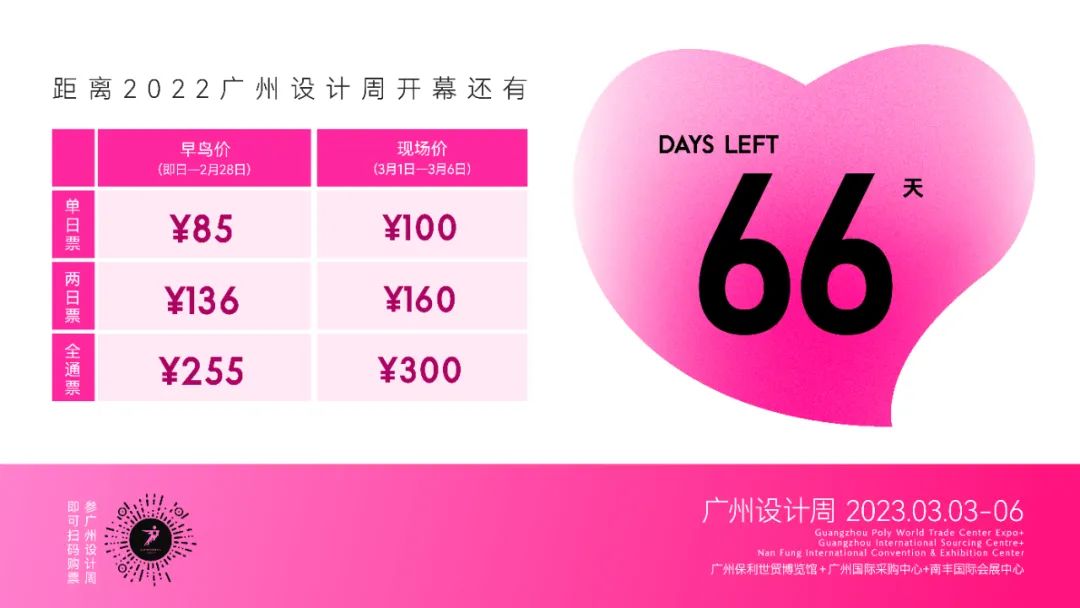
RARA 系统定制家居
以构建国际领先的系统定制家居品牌为理念
对“IDD世界领先设计对话”的支持

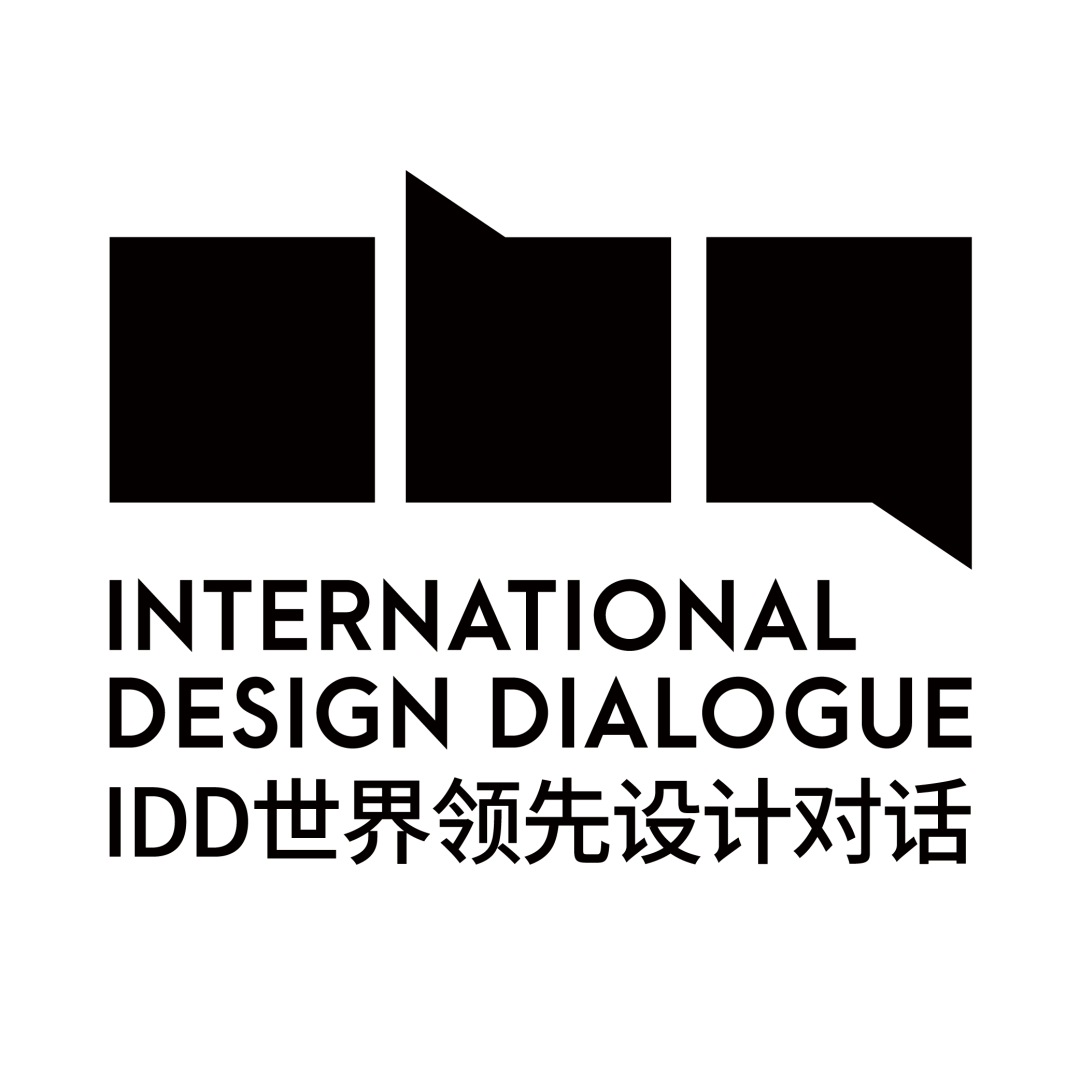
十几年来,广州设计周对于中国设计与世界领先设计思索的交流对话从未停止,IDD世界领先设计对话以对话巨匠、发掘新声、臻选杰作三大内容版块构建年度运营体系,由此推动世界领先设计与中国设计之间的对话交流和发展。
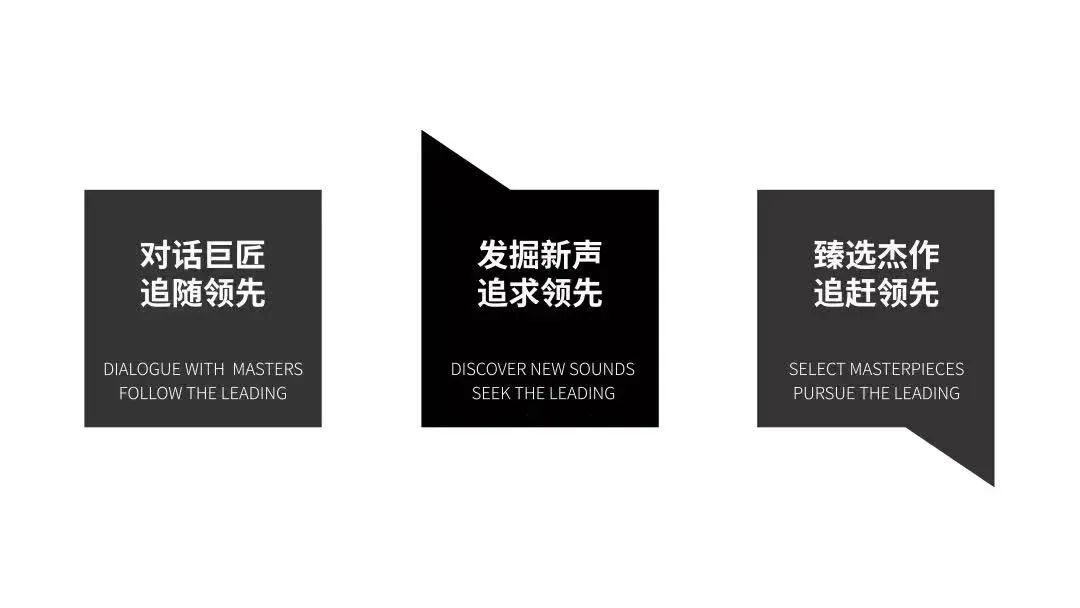
对话巨匠,追随领先
Dialoguing With Masters To Follow The Leading
对话巨匠,追随领先 | VOL.8
Chris Van Duijn
荷兰 | Netherlands
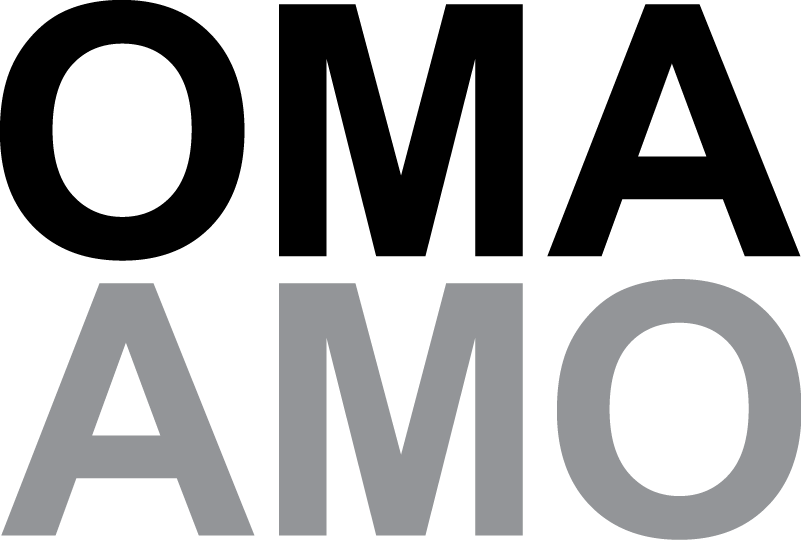
OMA是一家国际事务所,在传统的建筑和城市化研究框架内运作,而AMO则是一个研究和设计工作室,将建筑思想应用于传统领域之外。 OMA由八位合伙人领导,在鹿特丹、纽约、香港、多哈和澳大利亚均设有事务所。目前施工中的项目有:英国曼彻斯特“工厂”艺术馆、中国杭州光棱、美国休斯敦旧邮局改造、及中国深圳自贸时代中心等。已落成的OMA项目包括:台北表演艺术中心(2022年)、瑞典斯德哥尔摩Norra Tornen双塔式住宅楼(2020年)、德国柏林Axel Springer园区(2020年)及韩国首尔光教Galleria百货大楼(2020年)。早期知名建筑作品包括意大利米兰普拉达基金会(Fondazione Prada,2018年)、中国北京CCTV总部大楼(2012年)及葡萄牙波尔图市立音乐厅(2005年)。
- IDD对话巨匠系列专访 -
本期走进世界顶尖建筑设计事务所OMA
对话OMA合伙人及亚洲地区负责人Chris Van Duijn
一起探讨世界顶尖建筑设计事务所背后的领先意识
广州设计周 x RARA x Belong波噜昂 联袂巨献
Chris Van Duijn
OMA合伙人及亚洲地区负责人
Partner of OMA & Head of Asia
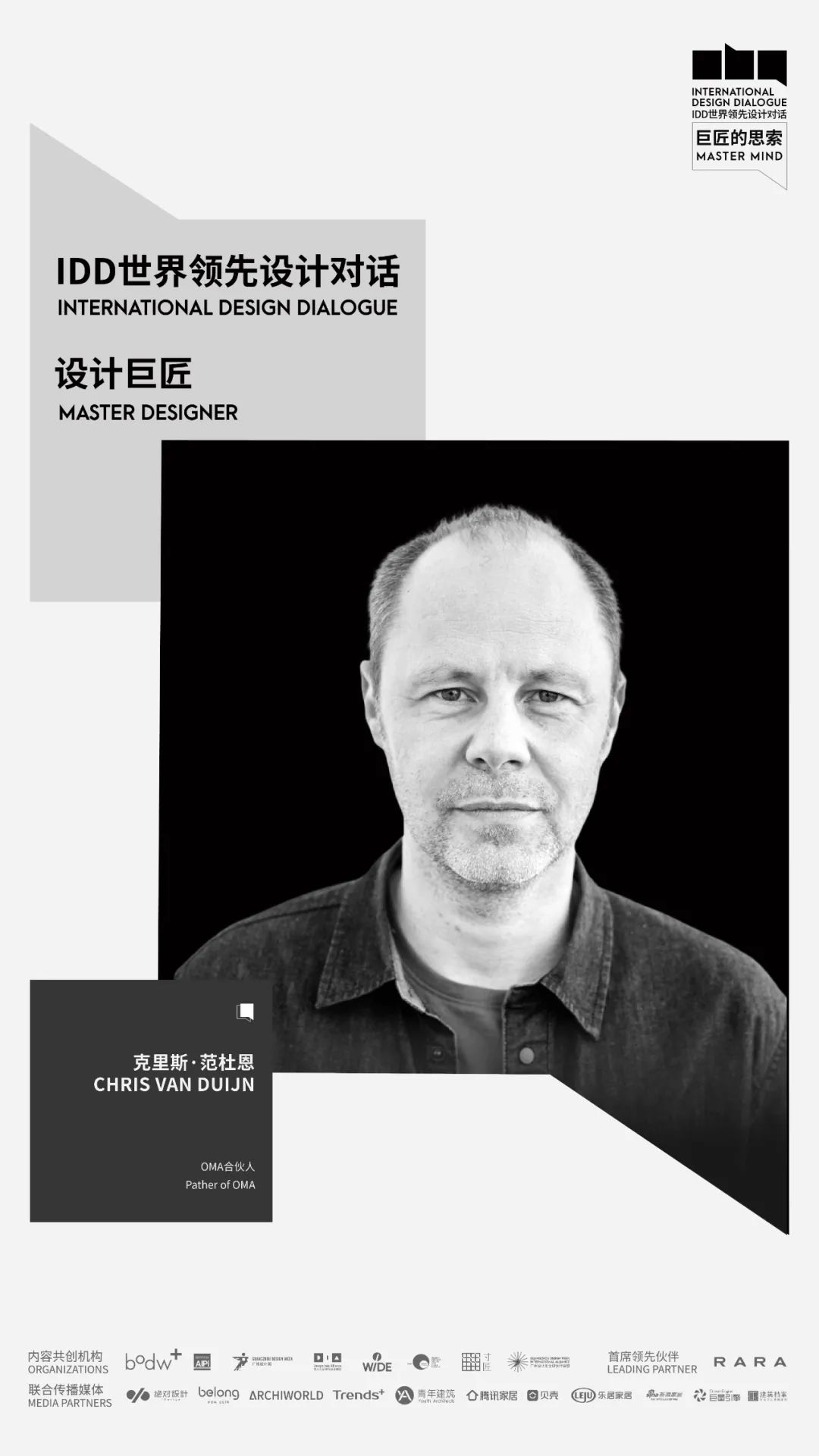
Chris van Duijn于2014年成为OMA的合伙人,并负责OMA在亚洲的项目。他于1996年加入OMA事务所,参与了OMA许多最著名的项目,包括洛杉矶环球影城、纽约和洛杉矶Prada旗舰店(2001年)、波尔图音乐厅(2005年)和北京中央电视台总部大楼(2012年)。除了大尺度和复杂的项目外,他还参与了室内项目和小尺度项目的设计,包括私人住宅、产品设计和临时建筑,比如首尔的Prada Transformer(2009)。最近完成的项目包括韩国首尔光教Galleria百货大楼(2020年)、MEETT图卢兹会展中心(2020年)、法国卡昂的Bibliothèque Alexis de Tocqueville图书馆(2017年)、米兰的Prada基金会(2015年)和莫斯科的车库当代艺术博物馆(2015年)。目前在亚洲的项目包括杭州光棱(未来新湖中心)和深圳自贸时代中心。他还领导设计了位于波尔多的Simone Veil桥。Chris van Duijn拥有代尔夫特技术大学的建筑学硕士学位。

QUESTIONS ABOUT WORK & LIFE
关于工作和生活
Q1
作为亚洲区的负责人,您日常的一天是怎样的?
As the lead of Asia, what is your typical day like?
自从新冠疫情开始,情况发生了很大的变化。疫情之前,我有一半的时间是在亚洲出差,另外一半的时间是在鹿特丹工作。疫情之后,我的出差减少了很多。直到2022年春季,才可以前往除中国以外的亚洲大多数国家。最初我经历了很多不同的新冠疫情管控和隔离,但现在情况已经改善了很多。
That has changed a lot since Covid started. Before Covid, I was travelling 50% of the time through Asia, and the other 50% of the time I was working from Rotterdam. Since Covid, travelling has been reduced a lot, and only since Spring 2022 was it possible again to travel to most countries in Asia, except for China. So, I experienced a lot of different Covid regulations and quarantine initially, but now the situation has improved a lot.
当我不出差时,我通常在早上7点到8点之间开始工作,与香港办公室的各个团队进行线上设计会议。我们会和客户进行项目汇报,直到他们所在时区的工作日结束。之后,我会根据晨会讨论的内容准备设计推进的反馈,并处理其它的工作。
When I am not travelling, I typically start working between 7 and 8 in the morning and have virtual design meetings with the various teams in our Hong Kong office. We have presentations with our clients until the end of their working day. Afterwards, I have time to prepare feedback on design development based on what we discussed in the morning, and work on other office tasks.
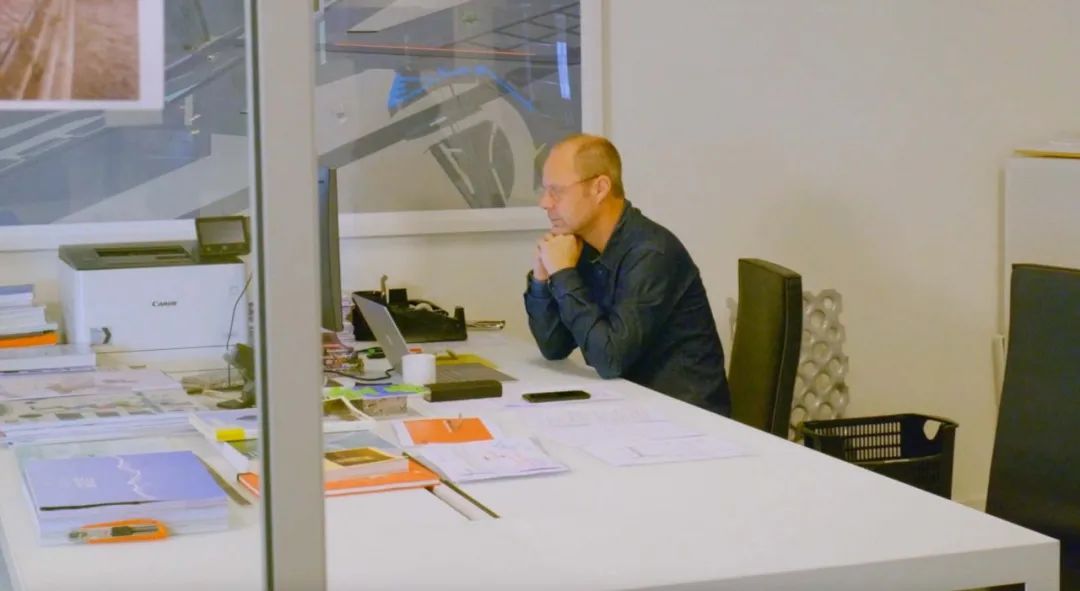
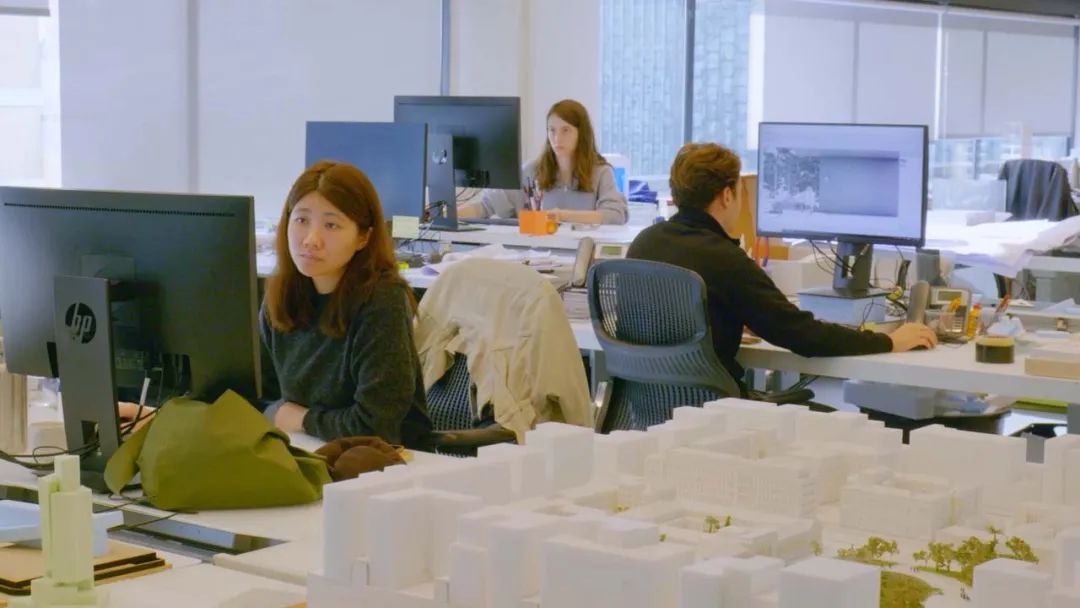
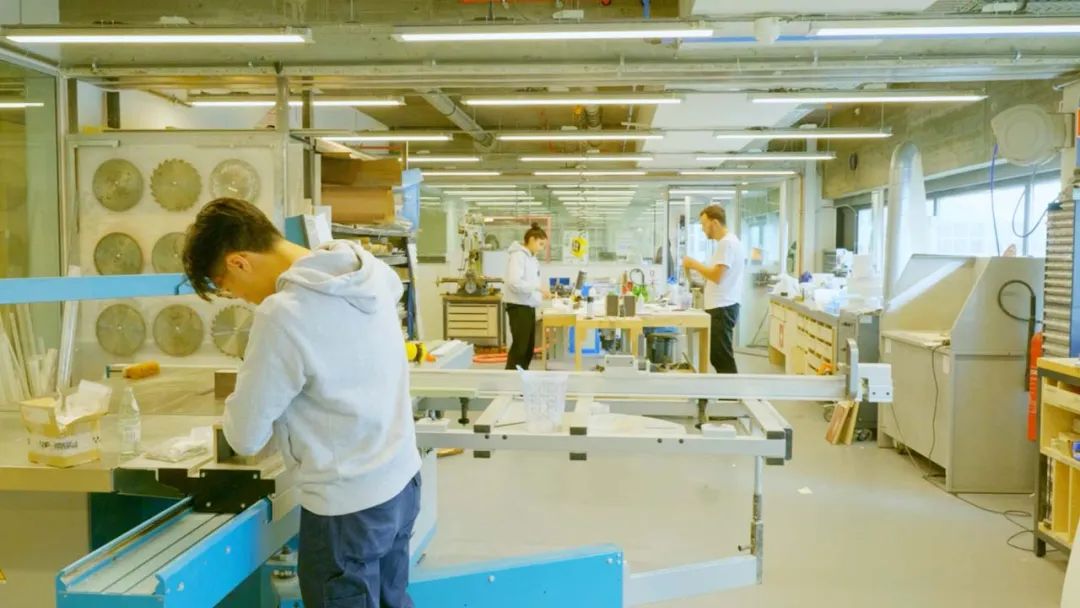
PROGRAMMING WORK SCENE 工作场景
@Koen Samson- Het & Bureau
您在1996年以实习生的身份加入OMA,现在您是公司的合伙人之一。您能谈谈您是如何从一个年轻的设计师成长为公司的领导者的吗?
当我在鹿特丹附近的代尔夫特技术大学上学时,我非常关注OMA的项目。当我得到去OMA面试实习岗位的机会时,我带着我的作品集在上午9点到达,我本以为面试会考察我的设计能力,相反,我被问到是否会做模型。在我对这个问题作出肯定的回答后,我被要求在全天的测试中展示我制作模型的能力。直到第二天早上汇报开始,我一直在不停地工作。之后项目负责人告诉我,只要有空缺的实习生职位,他们就会给我打电话。几周后,他们果然给我打了电话,然后我加入了好莱坞环球影城总部项目组。在上学期间,我继续在OMA制作各种项目和竞赛模型,或忙于波尔多别墅的家具设计。毕业后,我正式作为一名建筑师参与Prada的项目。
While studying in Delft Technical University, which is close to Rotterdam, I followed the OMA projects very closely. When I got the opportunity to visit the office to interview for an internship, I arrived at 9am with my portfolio, expecting to have a discussion on my design skills. Instead, I was asked whether I knew how to build models. After my positive response to that question, I was then requested to demonstrate my skills in a full-day test. I worked non-stop until the presentation started the next morning, and the project leader told me that they would call me whenever an intern position is available. A few weeks later, they did call me and I started working on the Universal HQ project in Hollywood. During my studies, I continued to work on various projects and competition models, or furniture designs for the Bordeaux villa, until I graduated and started working as an architect on the first Prada projects.
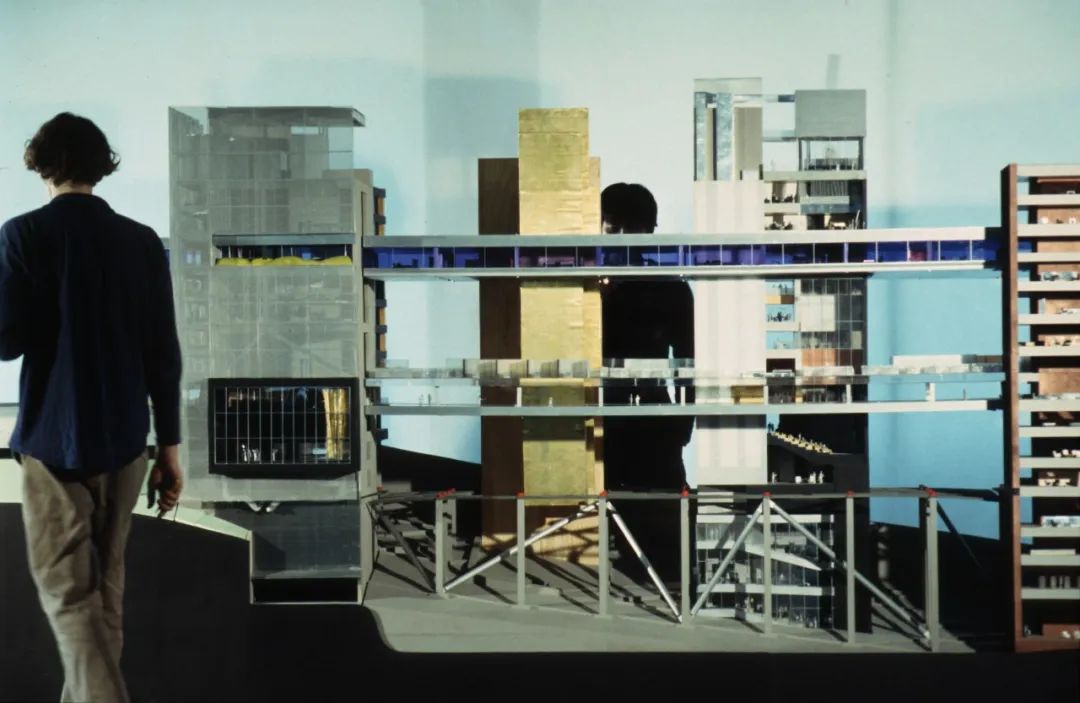
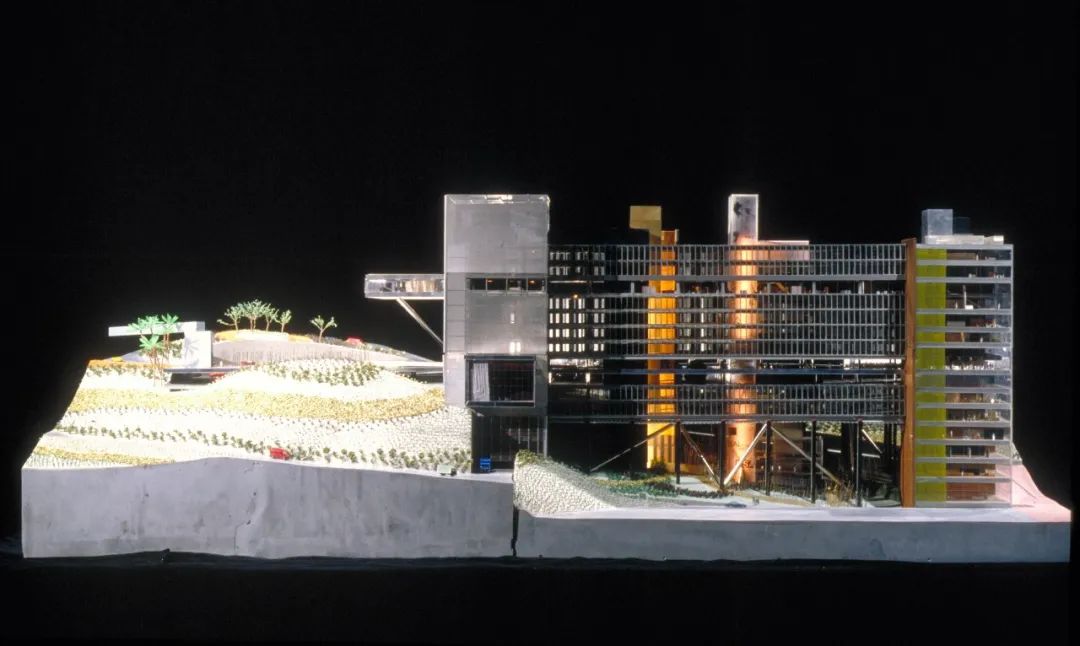
NEW UNIVERSAL HEADQUARTERS 环球影城
©OMA
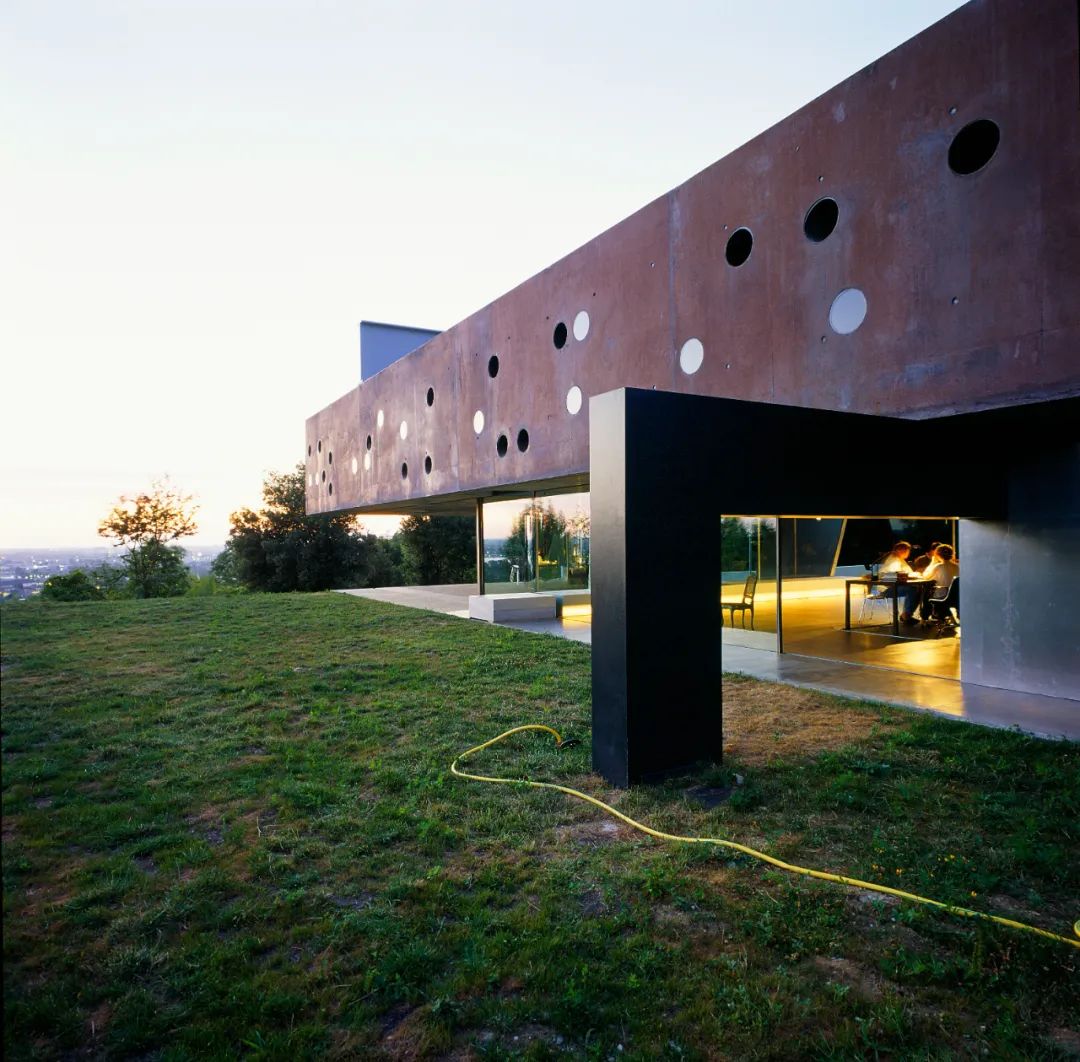
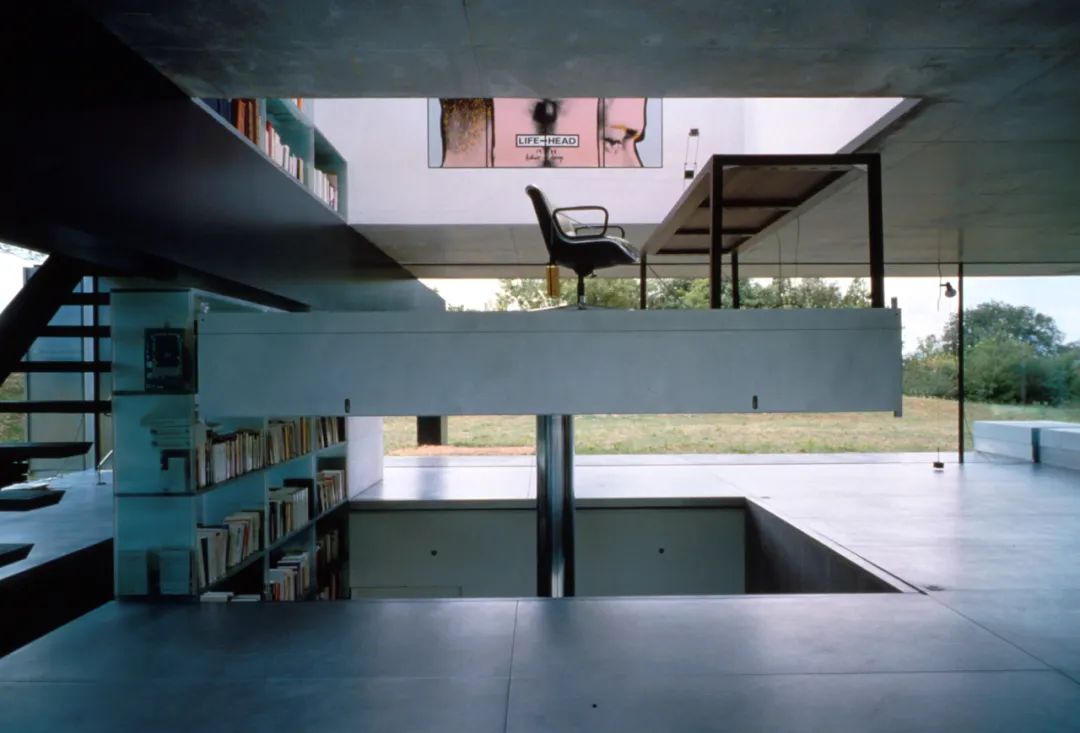
MAISON A BORDEAUX 波尔多别墅
©Hans Werlemann
Q3
正如我们所知,Prada纽约旗舰店是您在OMA的第一个项目。您能和我们分享一下作为一名年轻设计师时的一些故事吗?
In hindsight, I think I was witnessing a pivotal period in the development of OMA when I started working as an intern in the late nineties. The years around the millennium was a time in which key projects like the Seattle Public Library, the music hall in Porto and the Dutch Embassy in Berlin were designed and built. These are exemplary projects that capture OMA’s transition from an academic studio into a respected architectural practice, and proved that what we designed at OMA could be built. The projects for Prada, and later the design for the CCTV HQ in Beijing, were important milestones as the office grew professional. This was a very turbulent period, also with many opportunities that were important for my own development.
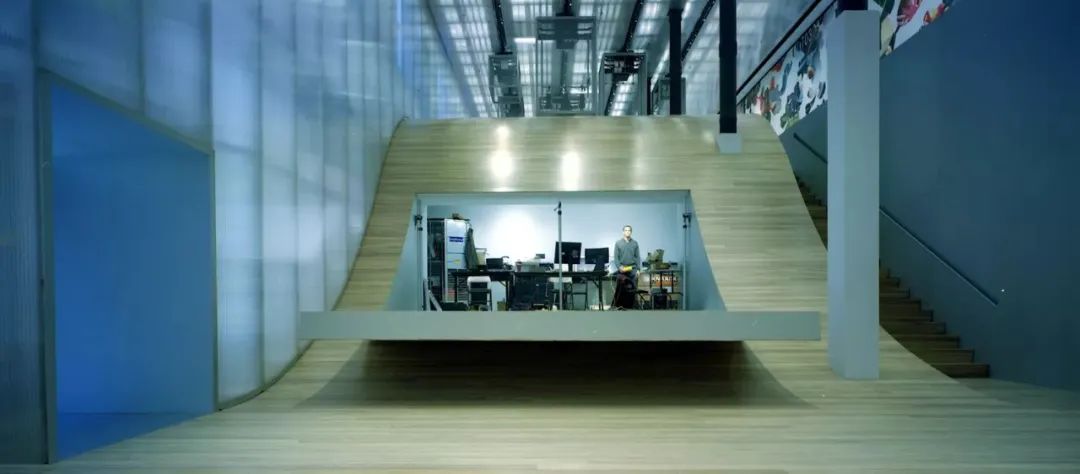
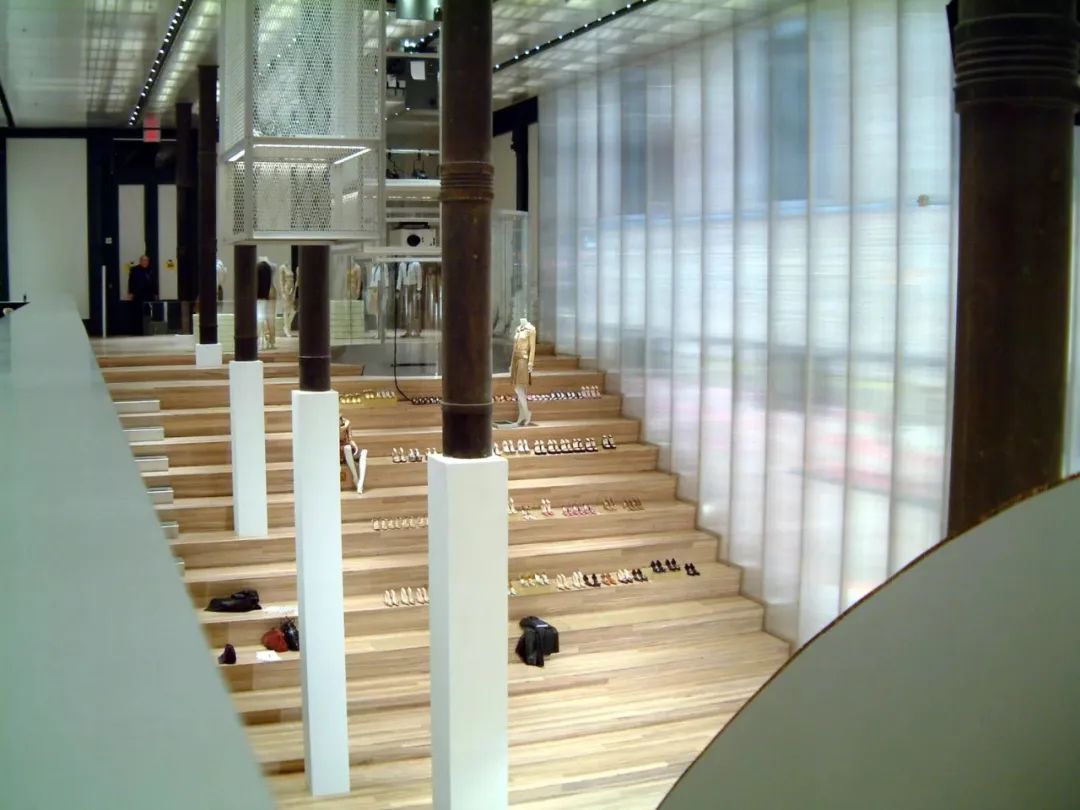
PRADA EPICENTER NEW YORK 纽约PRADA旗舰店
@Armin Linke(上)OMA(下)
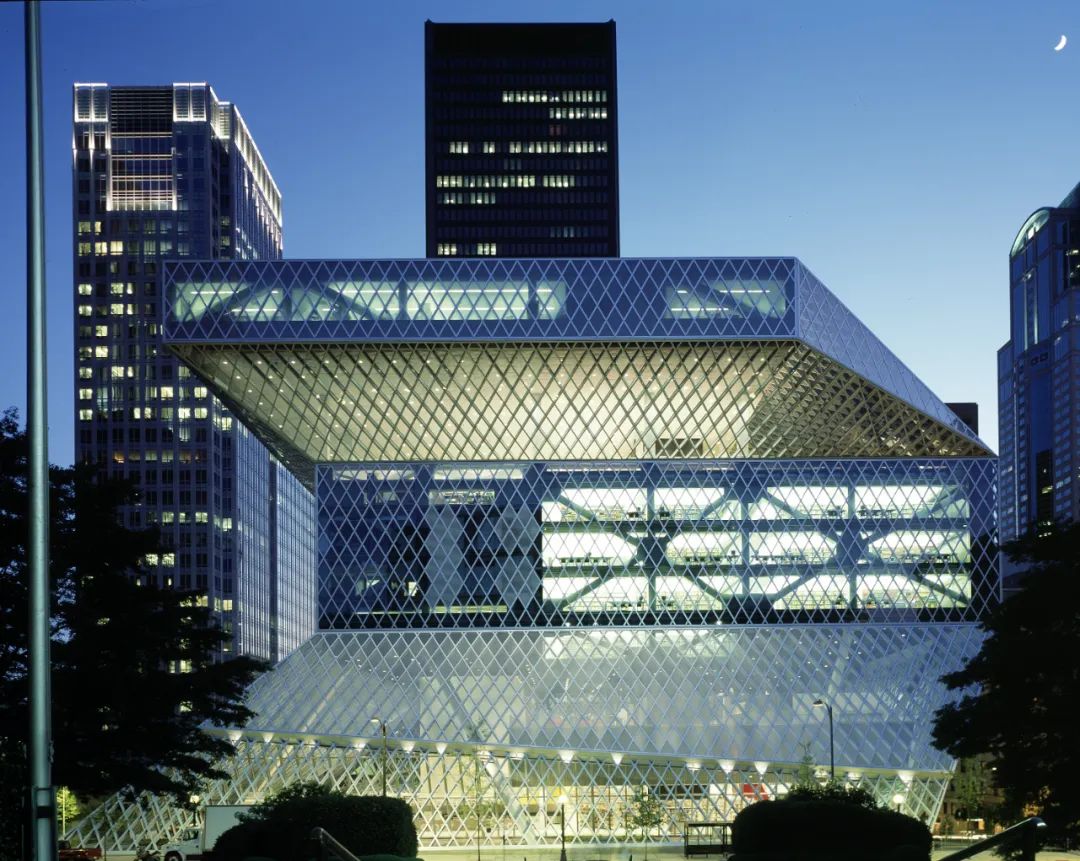
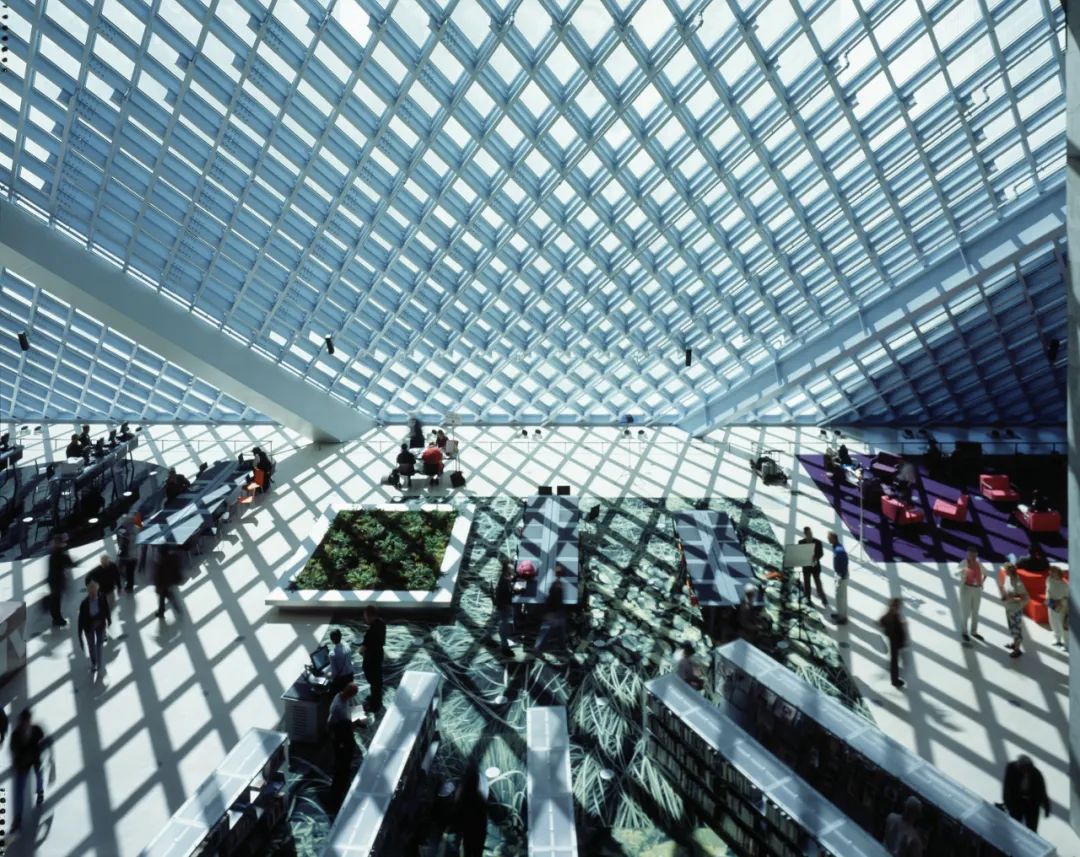
SETTLE CENTRAL LIBRARY 西雅图公共图书馆
©Philippe Ruault

CASA DA MUSICA 波尔图音乐厅
©Hans Werlemann
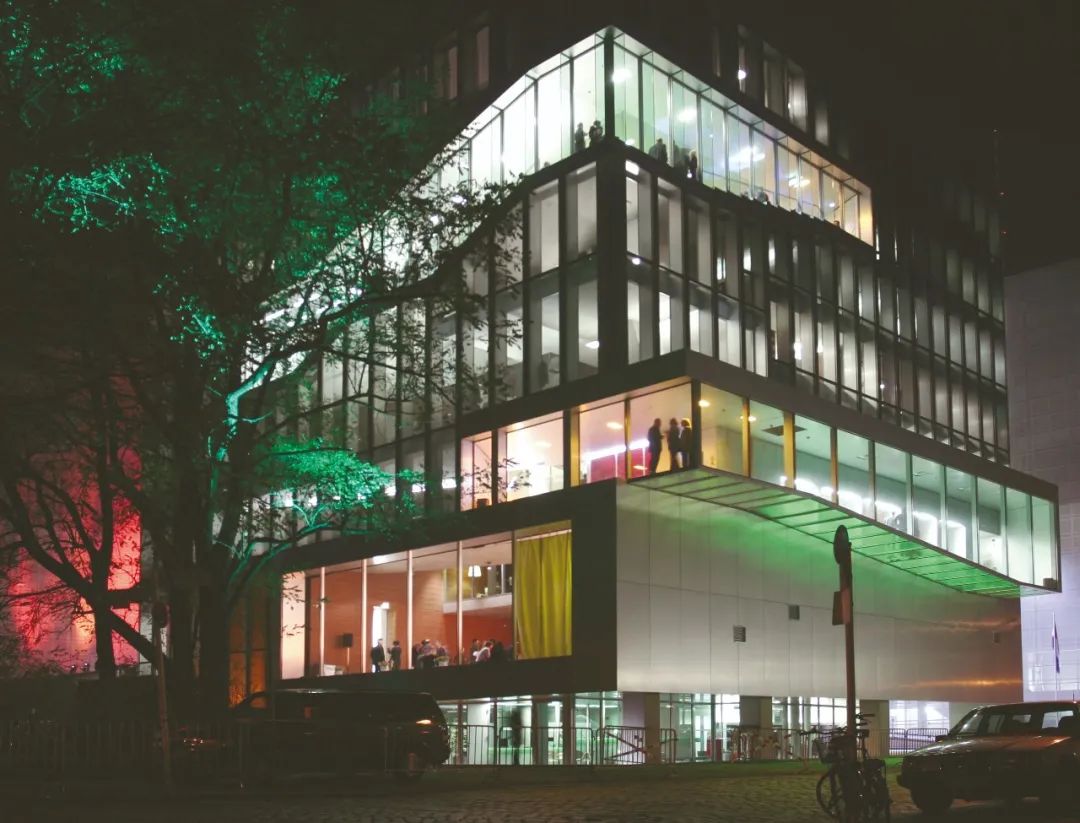
NETHERLANDS EMBASSY BERLIN 荷兰驻柏林大使馆
©Phil Meech

CCTV 中央电视台总部大楼
©Philippe Ruault
Q4
自从您加入OMA以来,您一直与OMA的创始人雷姆-库哈斯紧密合作。您能谈一下他对您的影响吗?
Rem Koolhaas was not only trained as an architect, but also as a journalist, filmmaker, critical thinker, writer and many more things. This attitude of thinking beyond the realms of architecture; being curious, investigative, and looking for larger relations that go beyond our profession, was what made me so curious about OMA in the first place. Although OMA has changed a lot in scale and organization through the years, this approach has remained and has shaped the design process for our projects in all regions of the world.
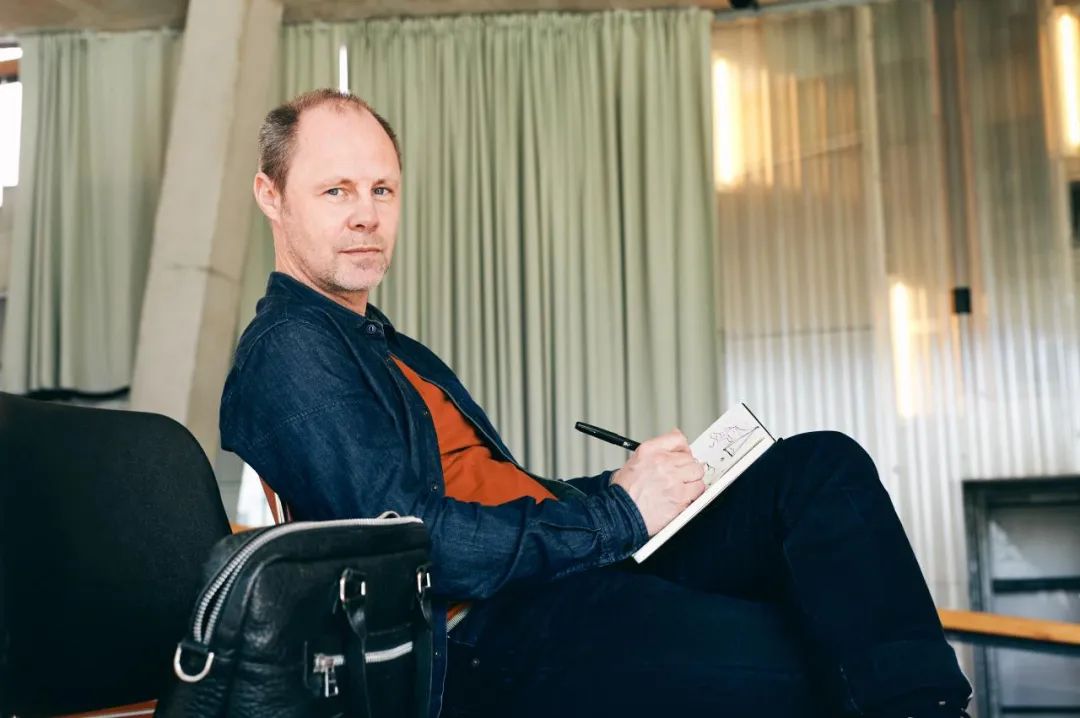
WORKING ON SKETCHES 绘制草图
@Marko Seifert
Q5
在你的职业生活中,最令人难忘或最自豪的时刻是什么?
The biggest step I’ve taken in my career was proposing to take the lead on our projects in Asia. For years, we have had an office in Beijing, and later in Hong Kong. Despite having completed CCTV, we did not manage to take advantage of our presence in Asia. There was even a period when we considered to close our Hong Kong studio and do all design work from our office in Rotterdam. However, considering the scale and potential of Asia, I was convinced that we could do much better. I then proposed to take up the challenge of leading OMA’s work in Asia for a period of one year in order to transform the office into a profitable and energetic environment with new projects.
After one year, we secured new projects, reorganized the team, and the office regained a lot of positive energy. We continued our efforts in the few years that followed, hiring and training new staff, and developing new routines. Everything was done systematically and step-by-step, until it all abruptly stopped…
With Covid, everything changed overnight. I was no longer able to travel to Hong Kong, we could not meet our clients in China, and most of our staff was separated from their families. But the great thing which happened was that, everyone in the office took the responsibility and stepped up. We had no turnover during these uncertain times. This has allowed us to continue working on existing projects and start new ones, even though I was only meeting them online for over 2 years. It is fantastic to realize that we had built so much cohesion in the office during those 3 years before Covid.
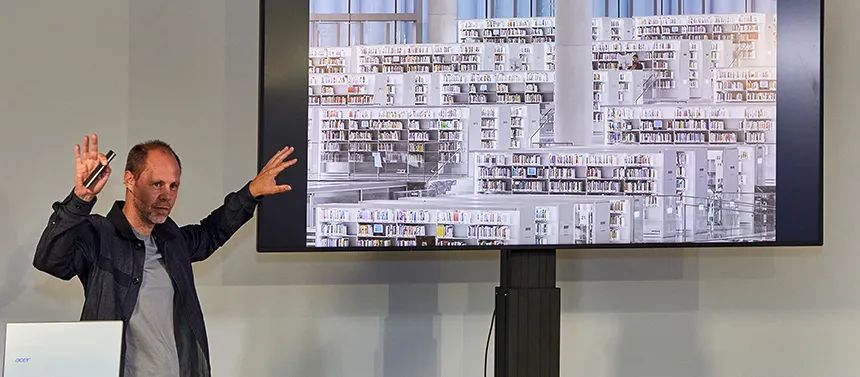
OMA ACADEMIA OMA学术讲座
Q6
您在很年轻的时候就发现了自己对建筑的热情。您对想踏入这个领域的年轻人有什么建议吗?
Architecture is not just a study of brick and concrete. It is also providing you with ways of thinking about social issues; about people, cities and public spaces; about art, creativity and aesthetics; about technology and innovation; about history and challenges in the future. In other words, our realm is unlimited, with so many opportunities for everyone.
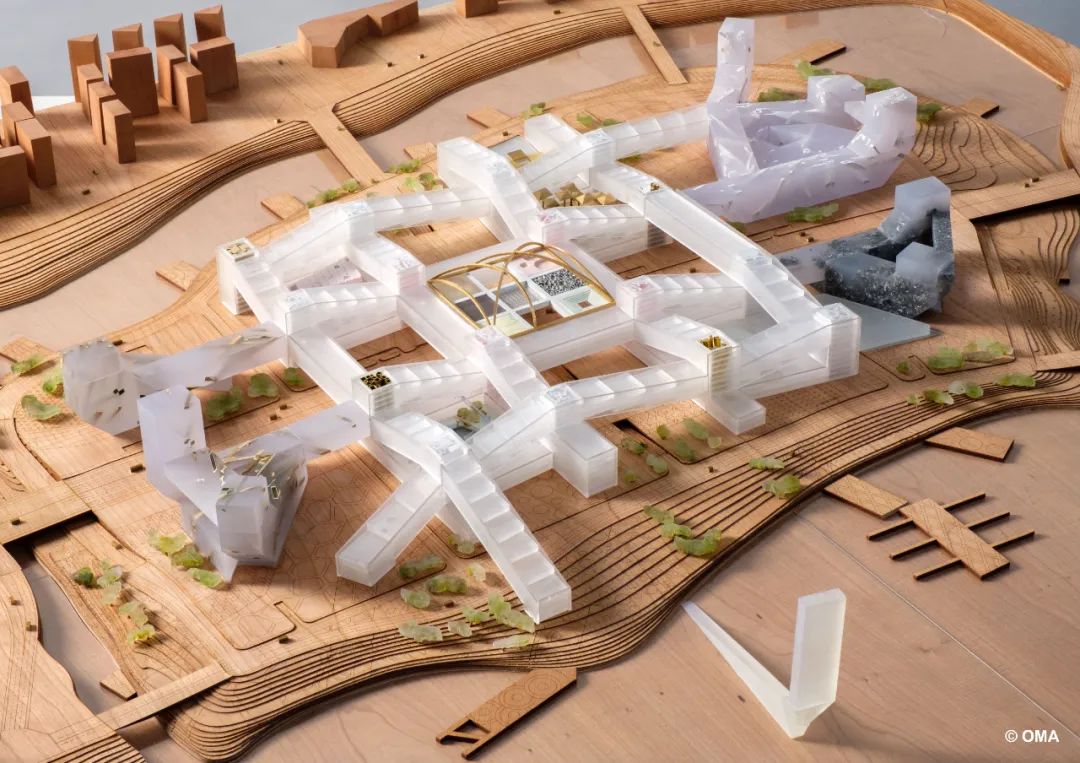
UNICORN ISLAND CHENGDU 成都独角兽岛
©OMA
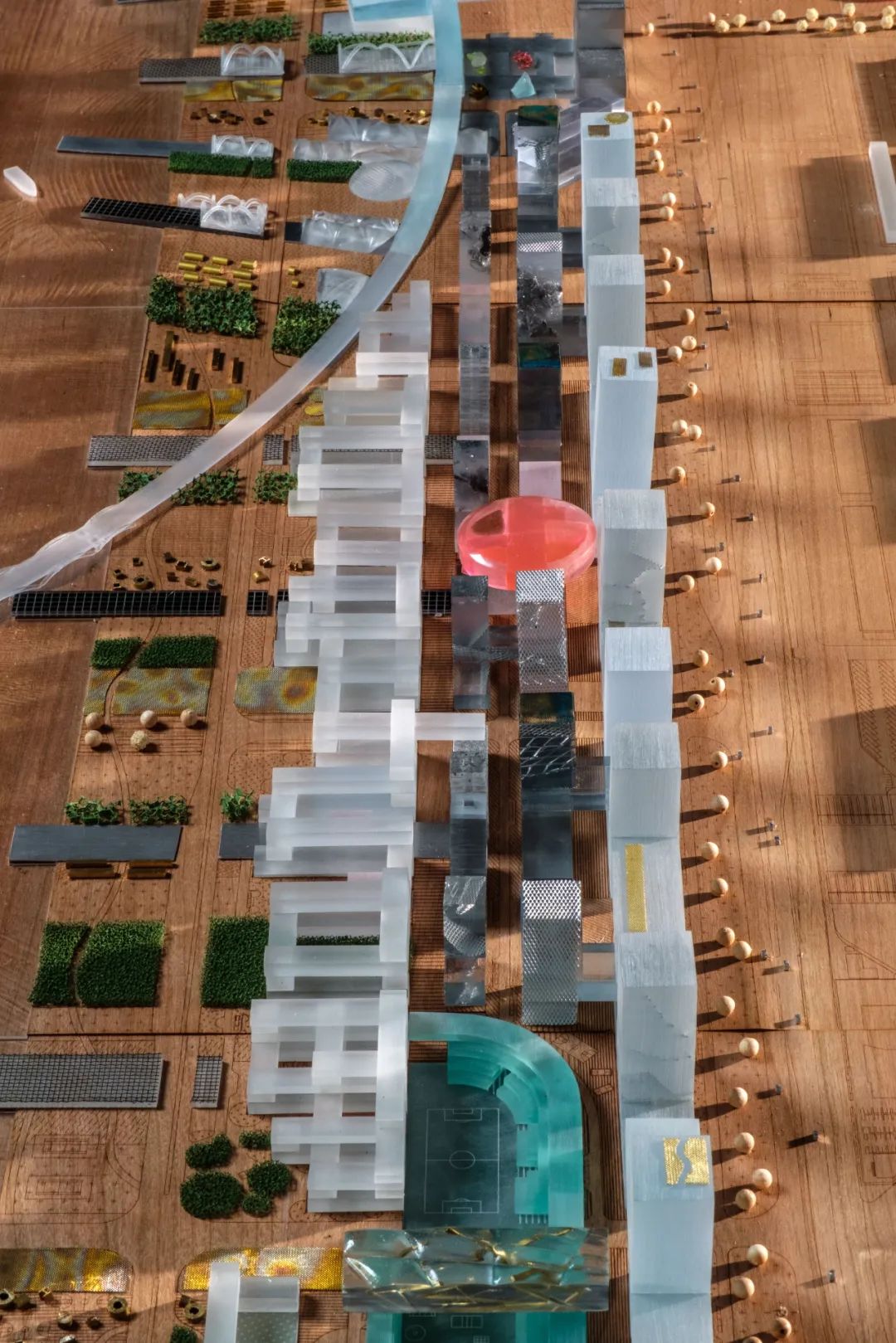
TENCENT BROADBAND CITY 腾讯前海五带一城
©OMA

QUESTIONS ABOUT FIRM & PROJECT
关于公司和项目
Q7
OMA如何保持其在创意行业的领先地位?
I think our position has changed a lot in the past 30 years. Globalization has created a much more diverse and extensive landscape of architectural designers and offices. It has made it much easier to learn from each other’s work and to find clients in other parts of the world. While OMA was once one of the, say, ten most relevant offices, there are today hundreds of practices that we should know and follow.
Also, China has changed significantly. When we designed CCTV, the architectural landscape was mostly dominated by large design institutes, responsible for very anonymous architecture. Since then, many small offices have emerged, developed their own architectural language, worked on projects outside of China, and have even won the Pritzker Prize.
What we find important is to define how our office can stay relevant. One tool is to explore new fields of interest, observing trends and phenomena outside of the traditional architectural sphere. One example can be studies on the development of rural areas, while others focus on the urbanization of cities. Or we can explore projects that are solely about energy, at the scale of an entire continent. Sometimes these studies end up as an exhibition or a publication, and sometimes it can form the beginning of a series of projects, such as the hospital of the future.
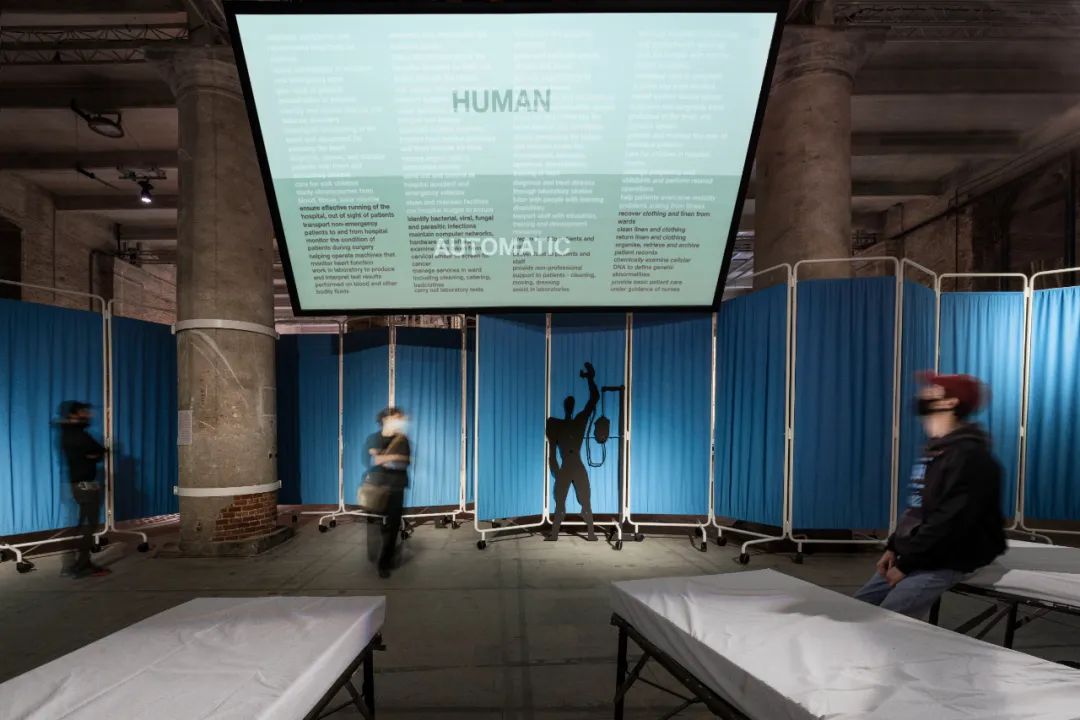
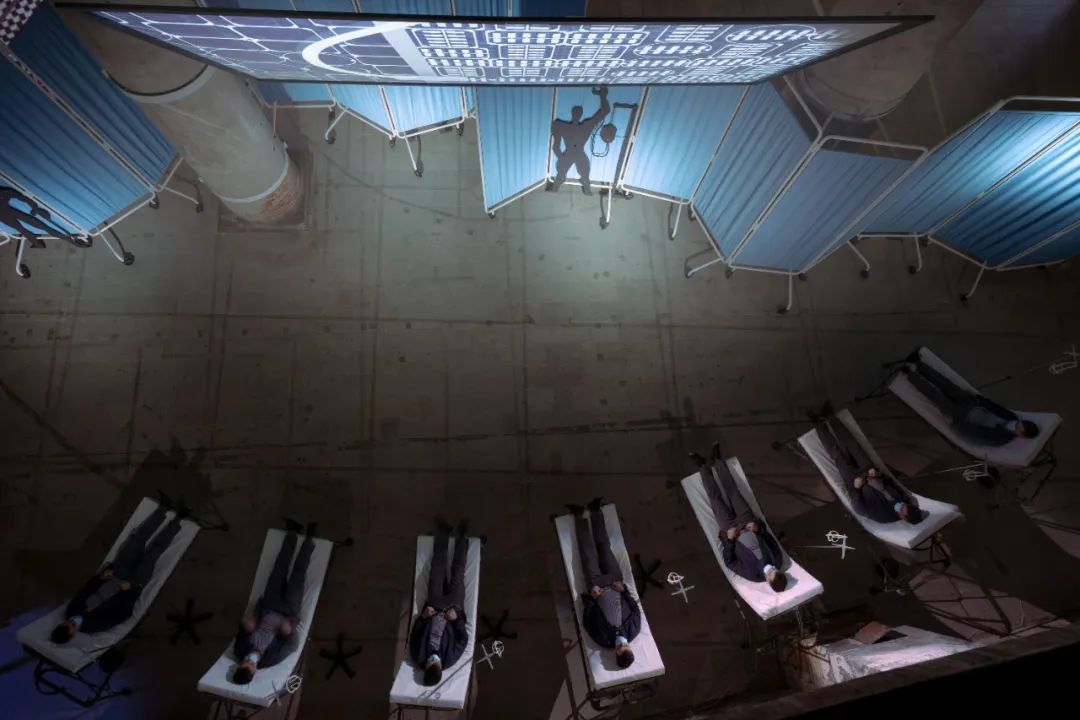
HOSPITAL OF THE FUTURE 未来医院
©DSL Studio(上)Riccardo de Vecchi(下)
Q8
我们知道,OMA的许多作品已经成为标志性的地标。您如何看待或定义这些建筑与城市之间的关系?
With every project, we are looking for opportunities that make it specific to its place. That can be the site itself, the city, the client, the local culture or climate. Often, it is a combination of these. On the other hand, clients select us because we are an international architecture firm, and they expect us to bring new ideas to the local environment, so we need to combine both perspectives. Working with both the local and global contexts allow us to develop buildings that have many layers. Our recently completed headquarters for Axel Springer, for instance, can be seen as our response to how working environments have evolved in the tech and media industries, starting from the Silicon Valley with Apple Garage, the Facebook Campus, the Google HQ and finally to the Apple HQ by Foster + Partners. Our project is an addition to this sequence, but it is also very much a Berlin building designed for this specific site and for this city only.
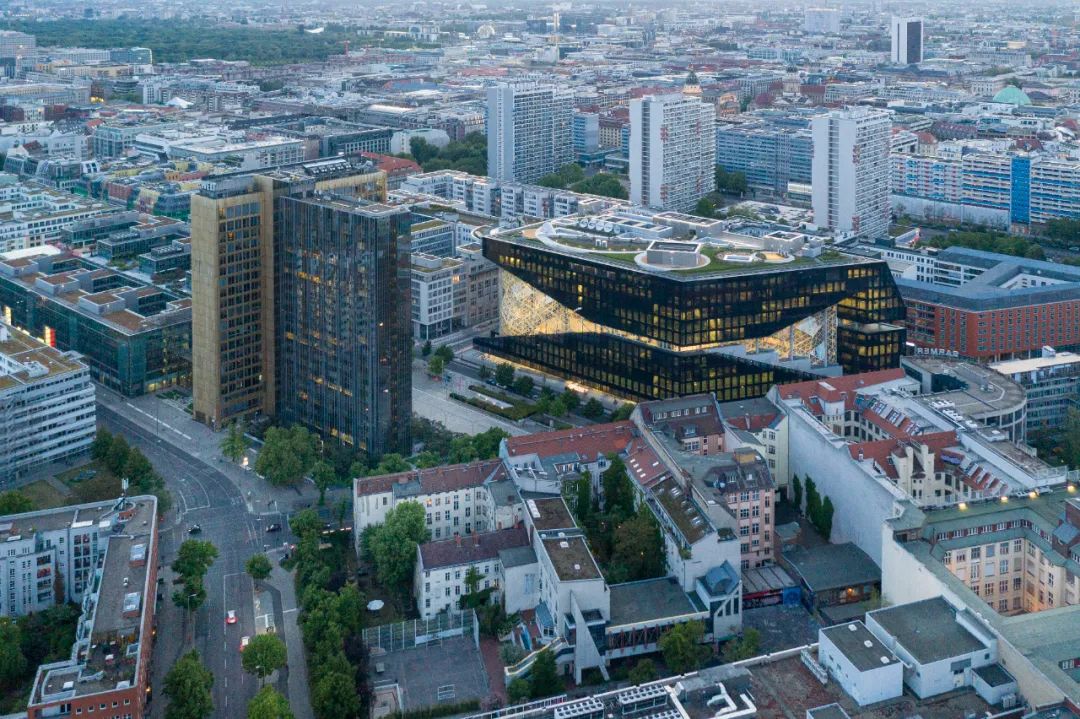
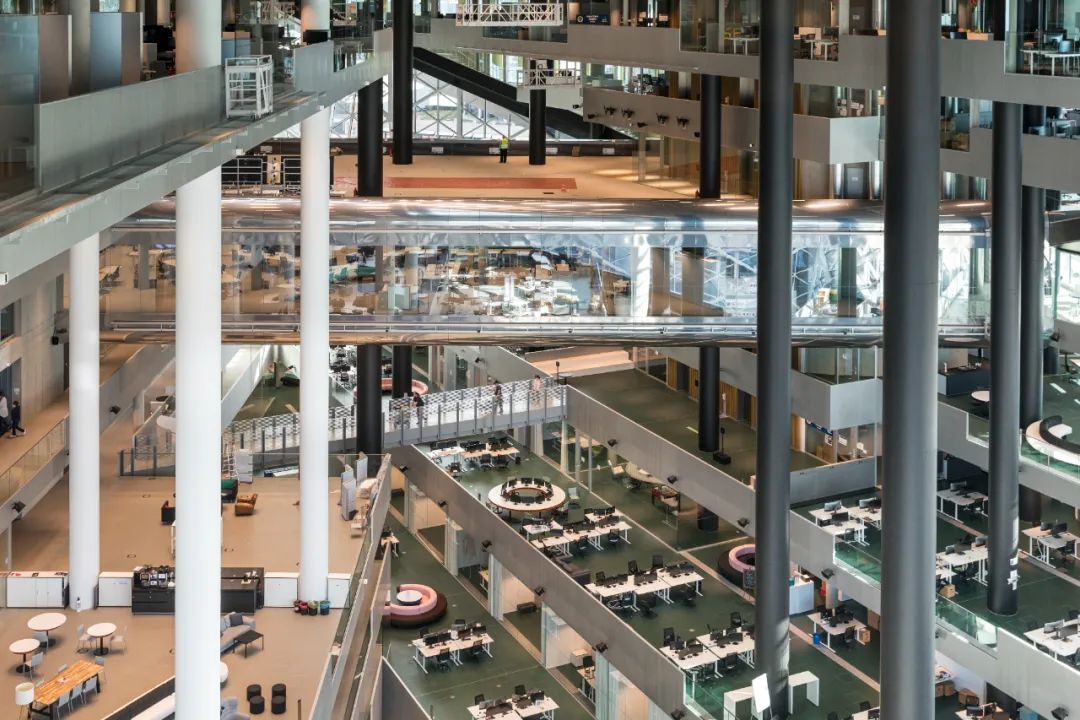
AXEL SPRINGER CAMPUS 新园区大楼
©Laurian Ghinitoiu
In other projects, such as the new masterplan projects in China, we are interested in solutions that challenge planning stereotypes, and we look for inspiration from local or regional elements. In our masterplan for the Future Science and Technology City in Chengdu, we have discarded the grid and proposed a series of clusters based on the local village typology. Each cluster was designed to engage with the existing topography, the water system and the green areas. Yet the final design does not look vernacular at all.
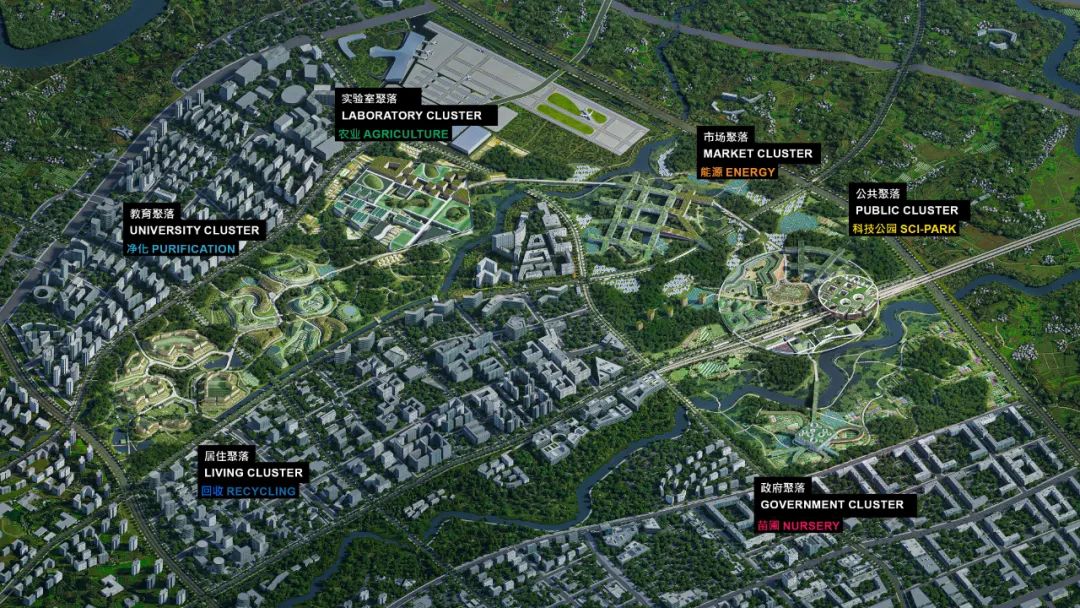
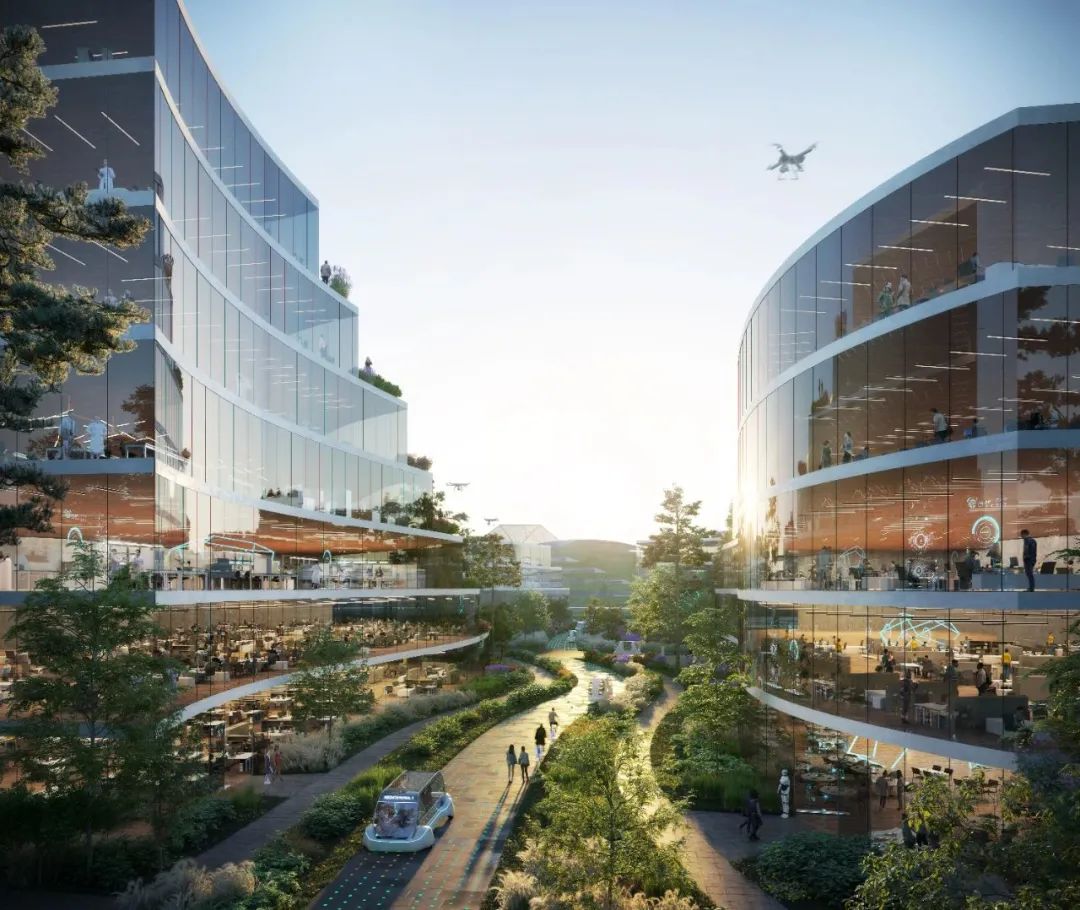
CHENGDU FUTURE CITY 成都未来科技城
©OMA
That is why having a design office in the region is so important; it allows you to be closer to the local culture, while we also take advantage of our global knowhow.
Q9
杭州光棱项目即将完成,深圳自贸时代中心正在建设中。作为亚洲的牵头人,您如何看待亚洲市场的挑战,您对大流行期间和之后的不确定性有什么策略?
The situation in Asia, and especially in China, has changed a lot in the past years. Many projects have stagnated, developers are struggling, and there is mounting competition between different architecture firms. But often, challenging times in the economy are also times of innovation. As an office, we are not interested in projects with the largest volume per se, but rather in challenging projects that require creativity. We expect to see in China more redevelopment projects, more urban regeneration projects, and hopefully more community projects. At the same time, the global economy works like communicating vessels. When the economy in China is slowing down, other economies in Asia and elsewhere will emerge and develop.
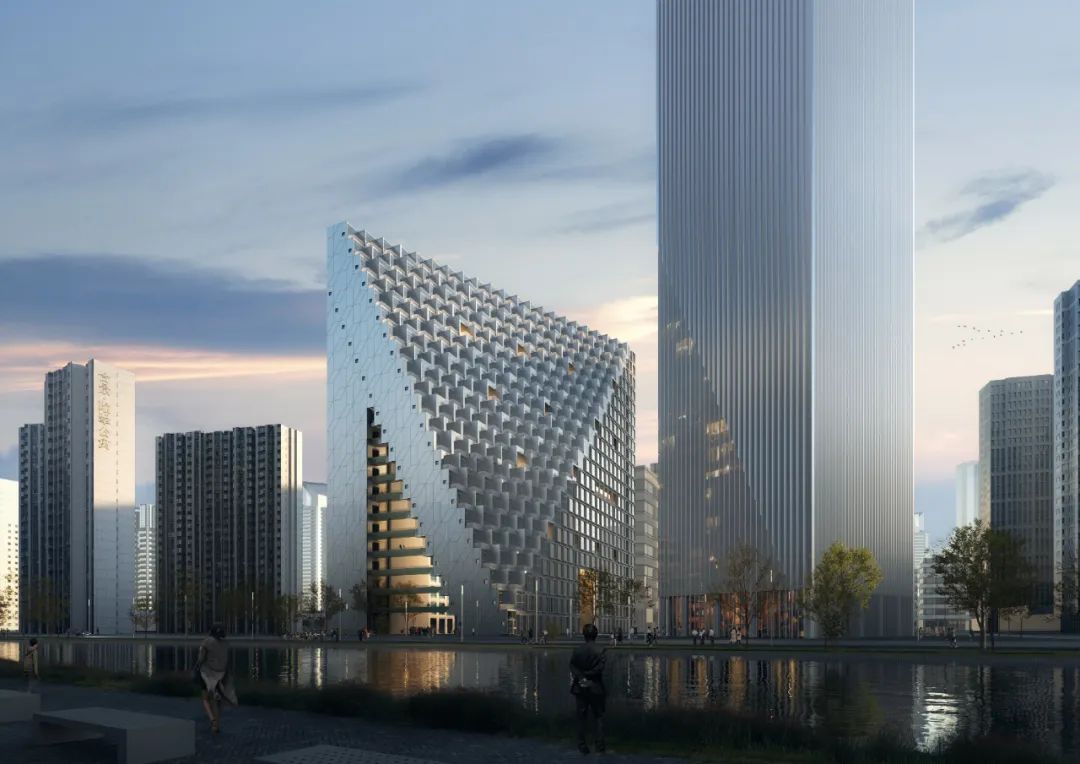
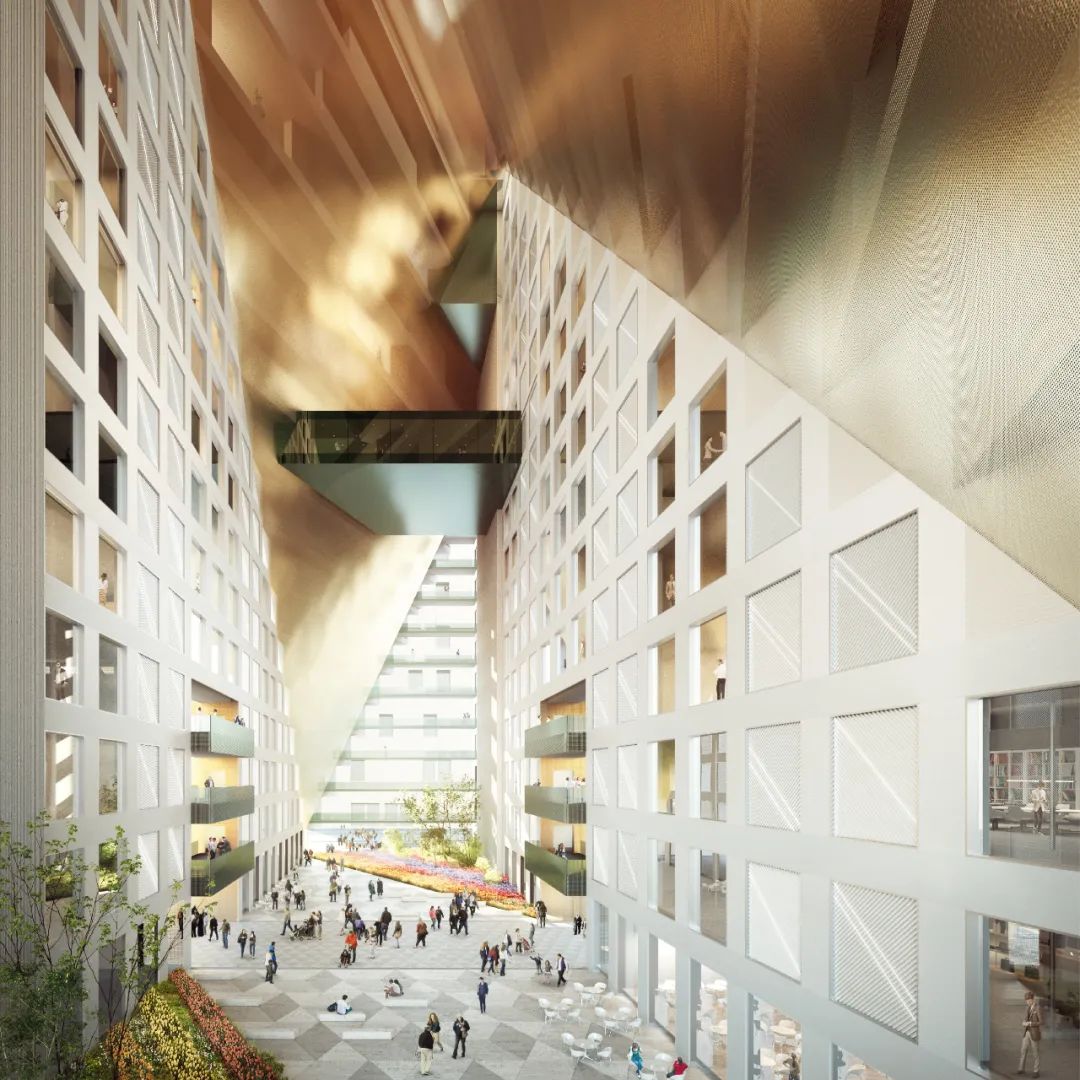
HANGZHOU PRISM 杭州光棱
©OMA
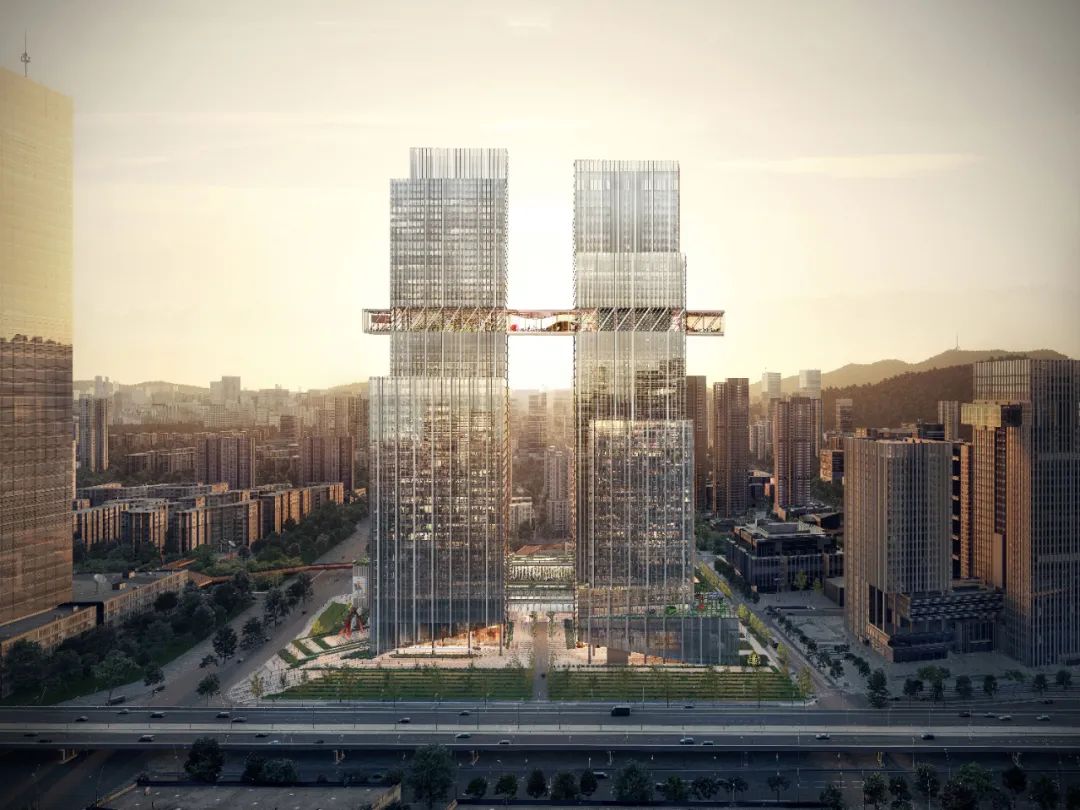
CMG QIANHAI GLOBAL TRADE CENTER 深圳自贸时代中心
©OMA
Q10
作为智囊团,AMO如何在实践中支持OMA?它是如何促进项目并增强品牌力量的?
AMO is a label we all use for a wide range of projects that go beyond the architectural domain. Sometimes there is a clear relationship between an AMO and an OMA project. For instance, when we start a project with a research phase on specific subjects, such research groundwork can form the basis of a brief for an architectural project. We have done studies on certain typologies, such as hospitals, and they formed the basis of our hypothetical ‘Hospital of the Future’ projects. This series of work provides a view of what hospitals in the future could become, considering the development of technology, changing demographics, and the (in)dependance on the global production chain of medical equipment and medicines.
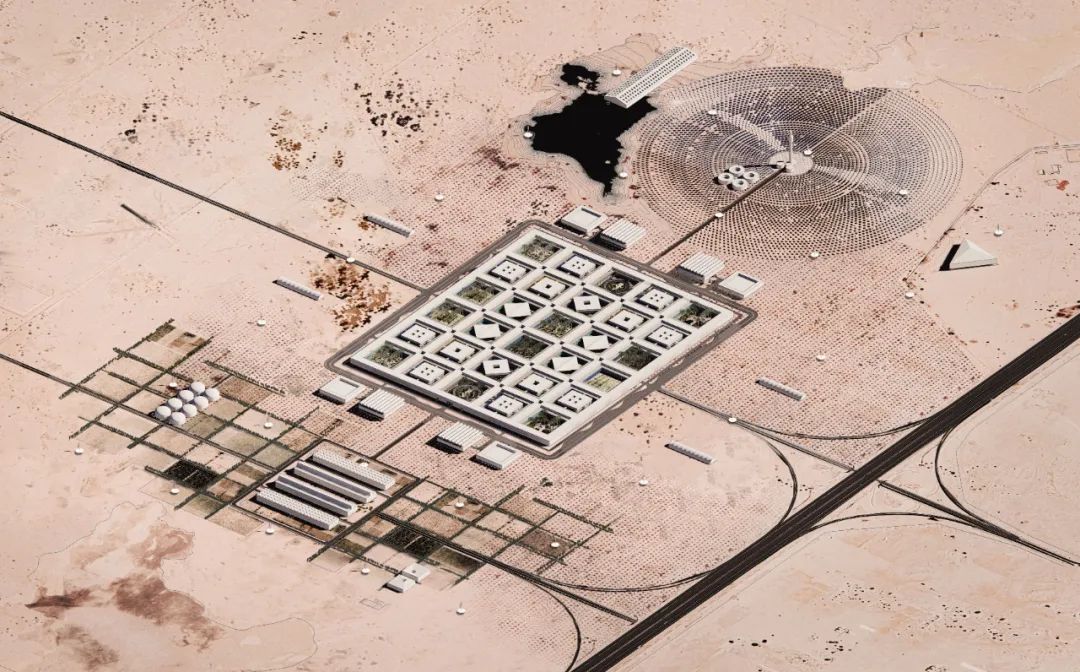
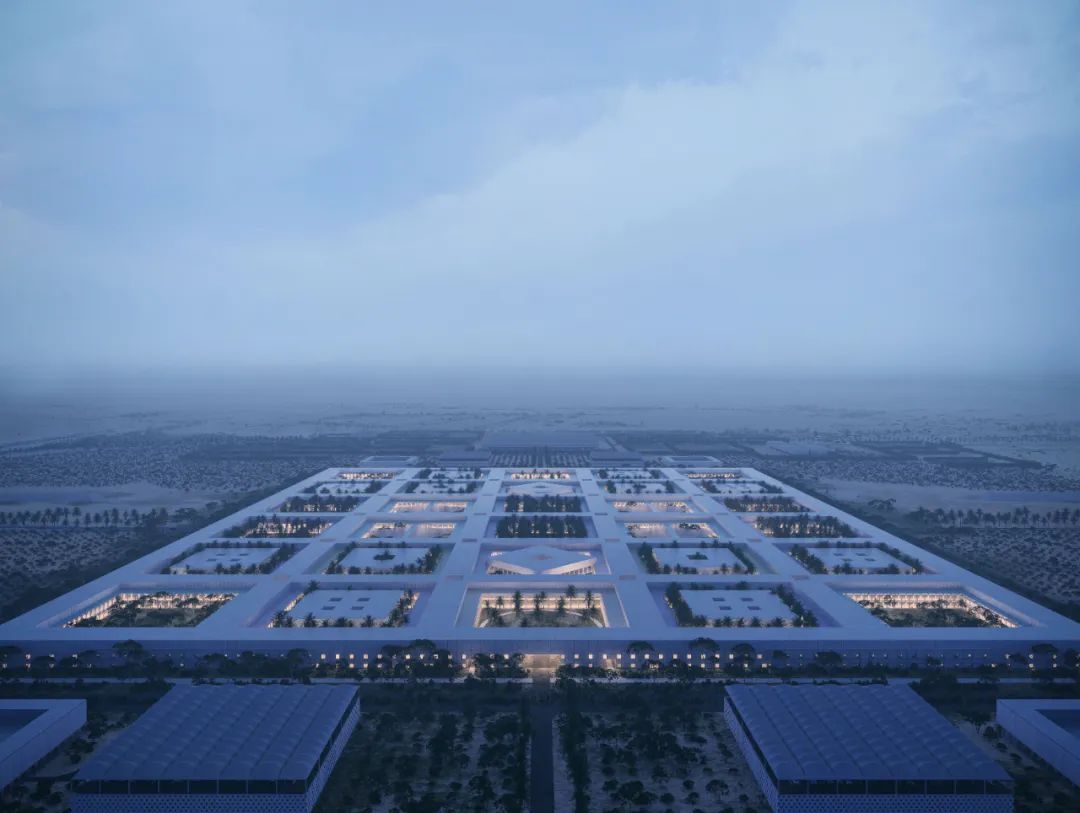
AL DAAYAN HEALTH DISTRICT MASTERPLAN 健康园区规划
©HMC-AL DAAYAN
Other AMO projects are very much design-driven, such as event design or scenographies for fashion shows. These projects form a design laboratory, or a testing ground for new ideas, as the conditions allow for more freedom than traditional architecture projects. They are often designed within a very short timeframe and are interesting, as they complement the painfully slow nature of most traditional architectural commissions.
Another kind of AMO project may bear no physical components at all, and the final results can be an exhibition, a publication, or the design of an emblem. Projects like the Countryside exhibition, our projects about energy, or the flag for the European Union are examples. They demonstrate that architectural thinking can very well be applied to other creative territories.
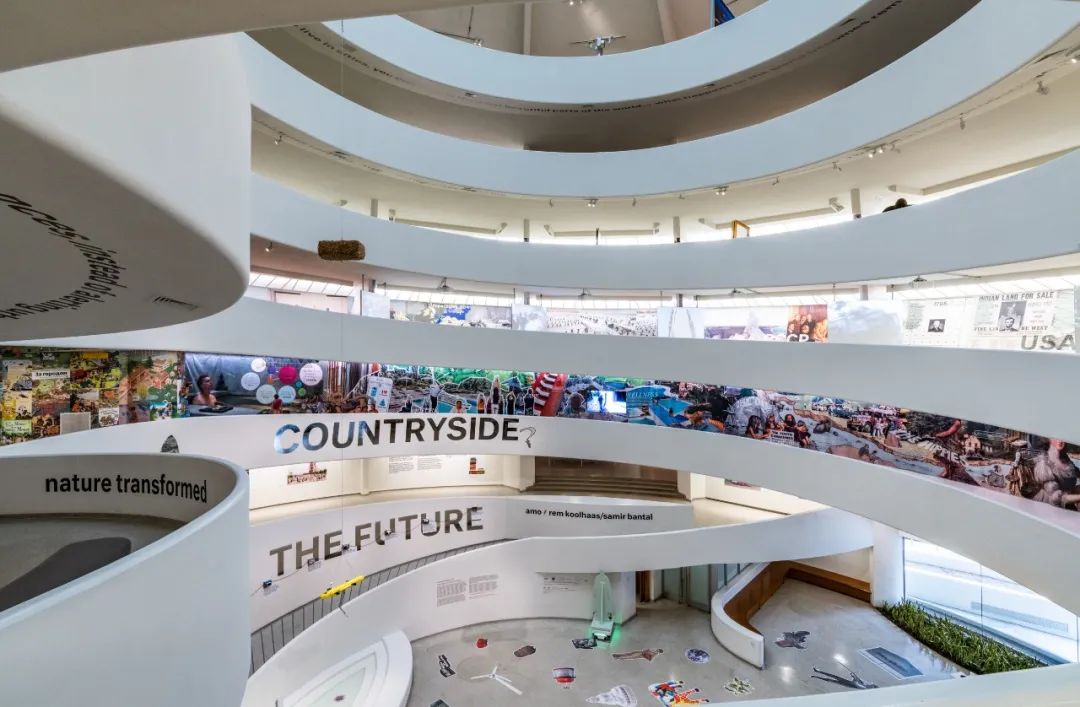
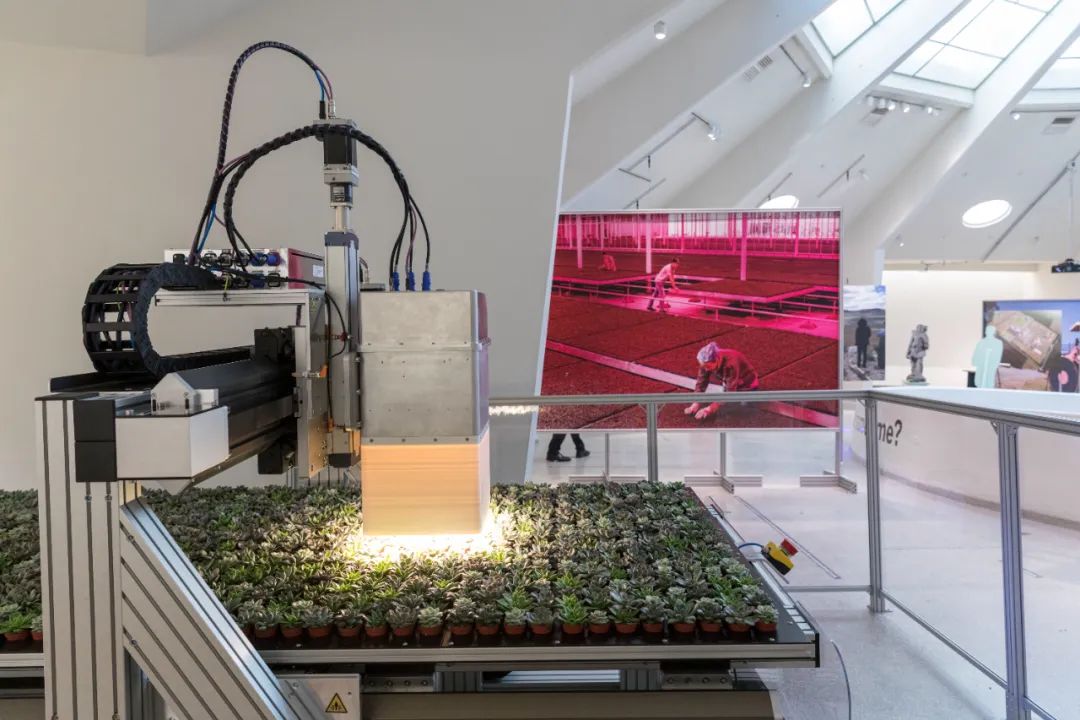
COUNTRYSIDE - THE FUTURE 未来乡村展览
©Image by David Heald(c) Solomon R. Guggenheim Foundation(上) Image by Laurian Ghinitoiu courtesy by AMO(下)
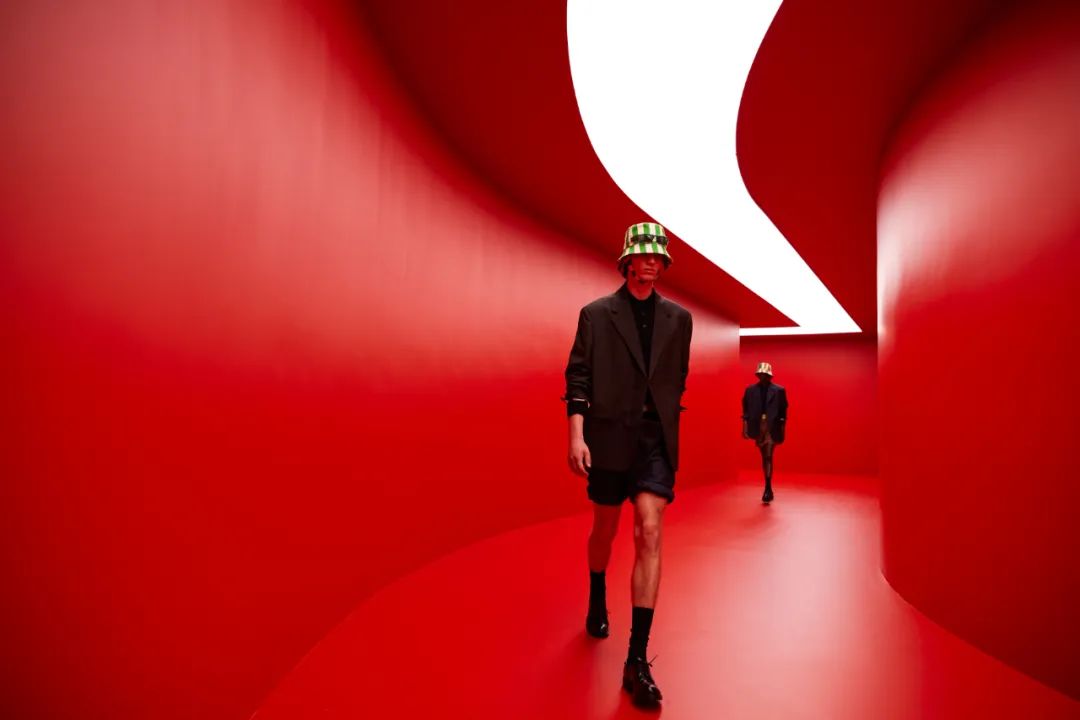
PRADA SS22 MENSWEAR SHOW PRADA22年夏季男装秀
©Agostino Osio
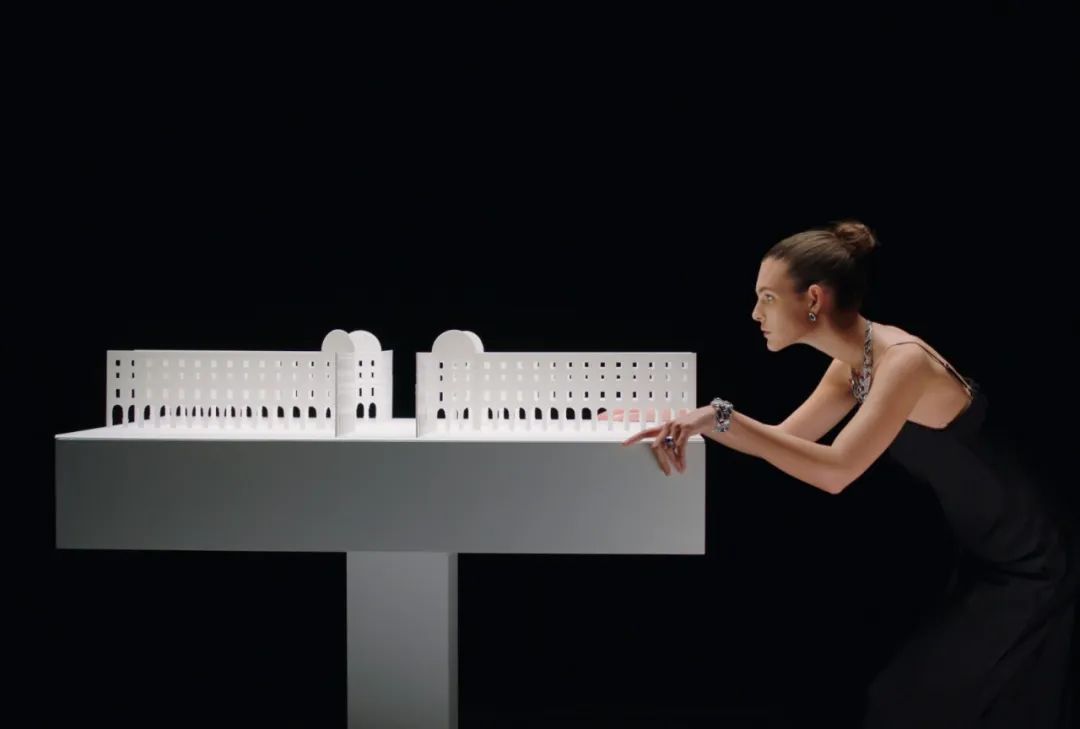
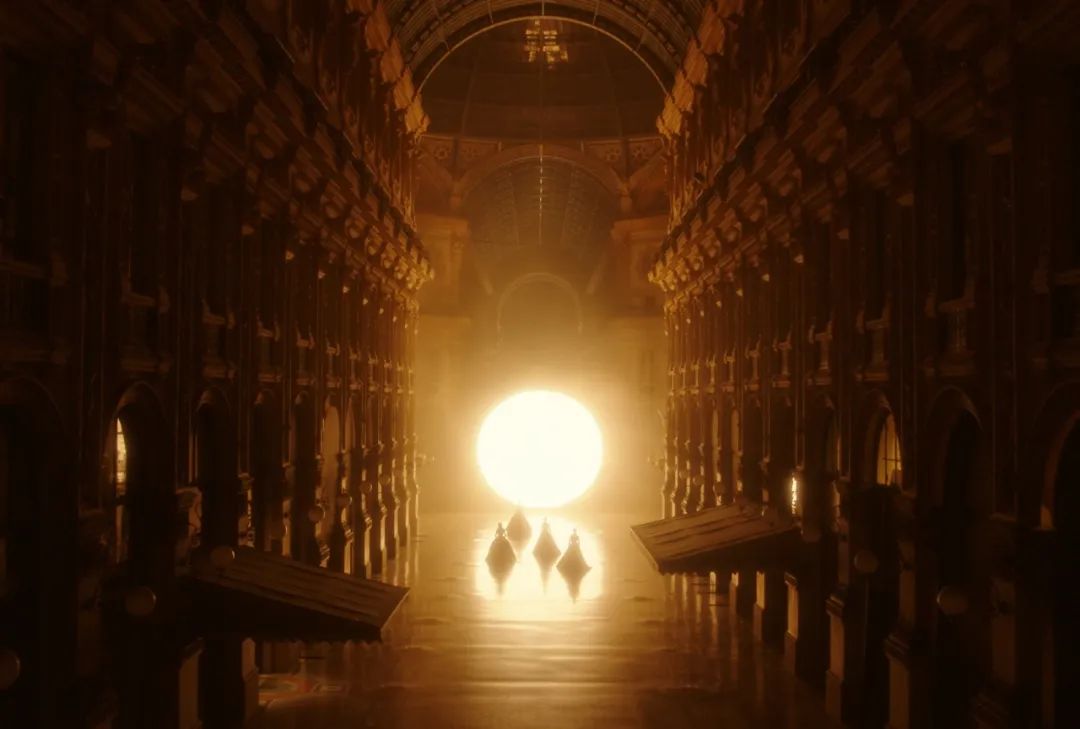
BVLGARI FINE JEWELRY SUMMER SHOW 宝格丽珠宝秀
©AMO
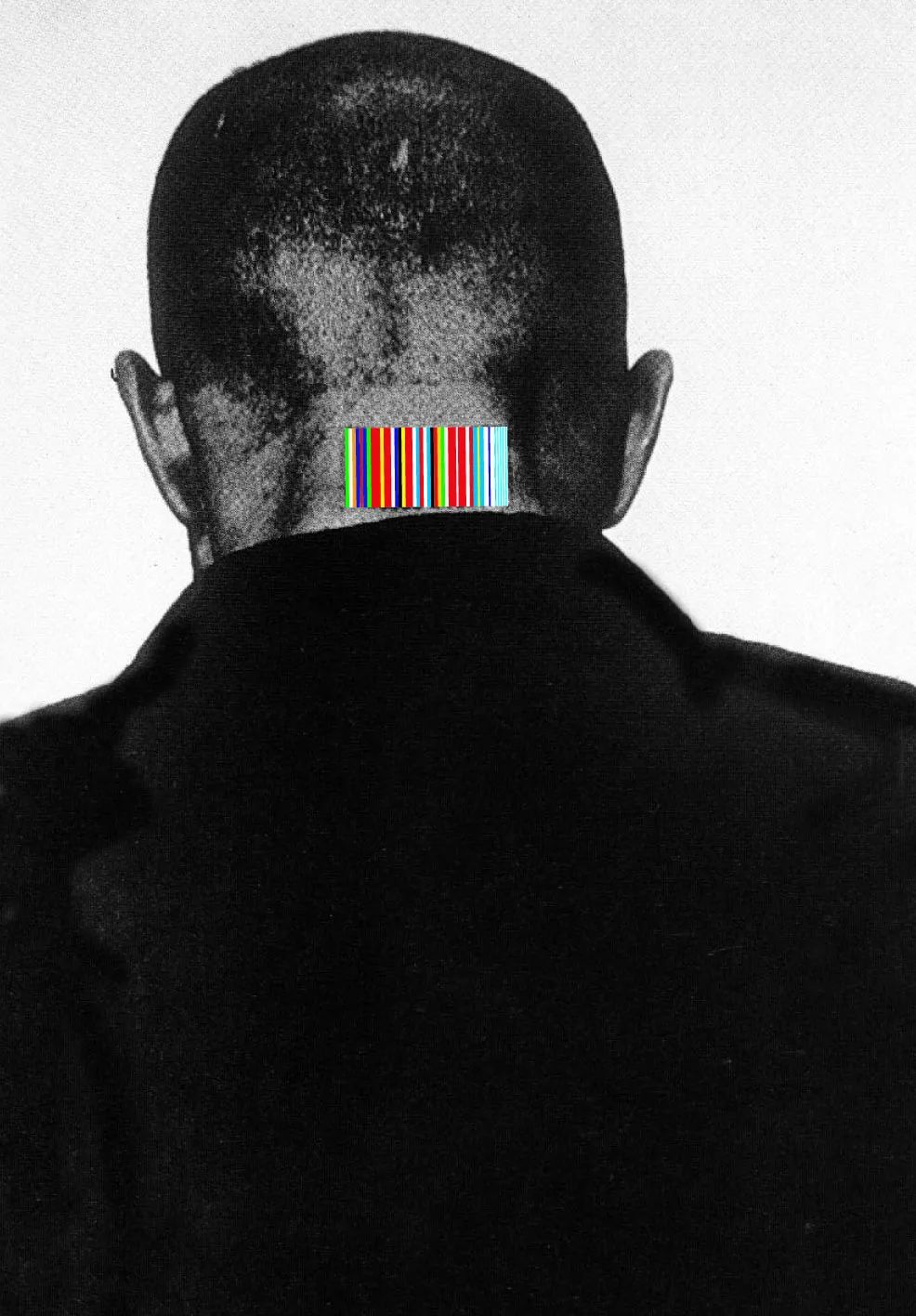
THE IMAGE OF EUROPE 欧洲旗帜
©AMO

QUESTIONS ABOUT FUTURE
关于未来
Q11
您如何看待科技发展和其他学科对建筑的影响?建筑学如何才能不断地发展?
I think architecture is an important medium for forming a connection between today’s life, and whatever happens in the near future through the introduction of artificial intelligence, robotized and automized systems, new mobility solutions and sustainable energy sources. Many of these technological advances will find their way into our cities and buildings, but I don’t believe that it will radically replace much of what we have and like today. Certain qualities are simply timeless - daylight, green spaces, real materials, privacy, uniqueness and social spaces, etc. New technologies will complement the current ones. For example, we could combine 3D printing with real wood, or combine AI generated and optimized design with instances of special design and handmade components.
Q12
有什么特别的项目类型是您感兴趣但还没有机会去做的吗?
Just too many. But if there is one special project that I would love to work on one day, it would be the design of some true James Bond spaces. I have been a life-long fan of the Bond movies. The earlier films have especially outstanding spaces; very futuristic and beautiful.
Q13
公司接下来想关注的方面是什么?
We like to work on diverse project types, and not to be bound by a certain realm or typology. At the same time, there are emerging regions in the world that we have yet to explore. We are a curious bunch. Working in so many countries and cultures is always inspiring, it has led us to opportunities that we would never have imagined ourselves.
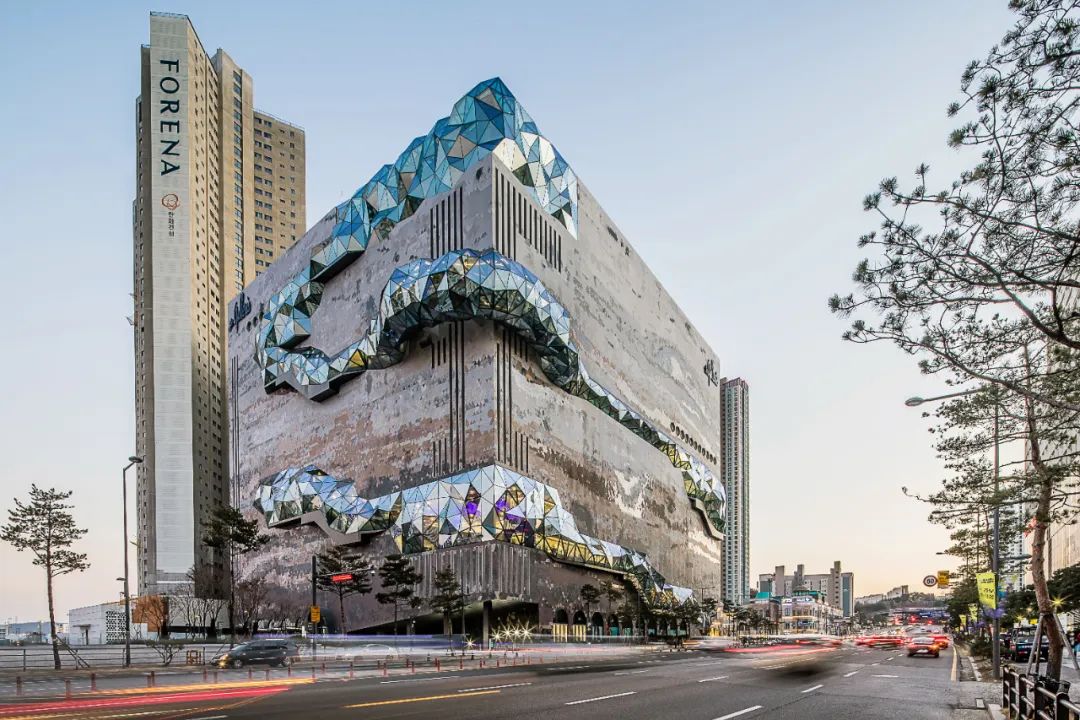
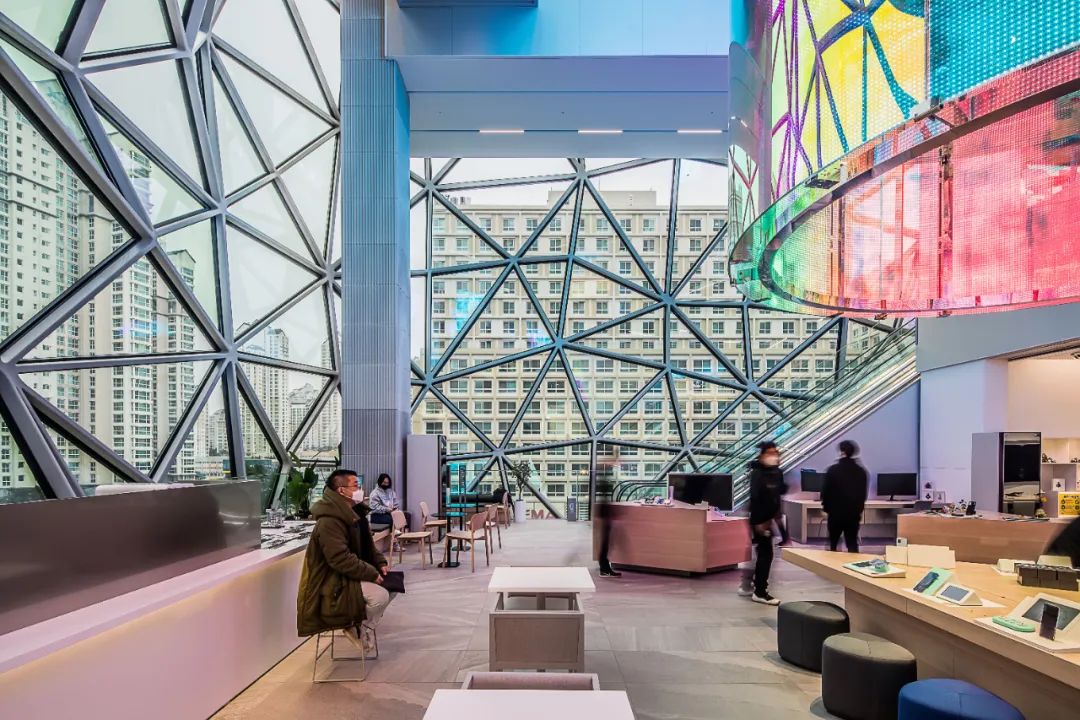
GALLERIA IN GWANGGYO 韩国光教Galleria百货大楼
©Hong Sung Jun

QUESTION ABOUT IDD
关于IDD
Q14
您如何理解设计背景下的 "领先 "一词?
I would like to change the world ‘leading’ into ‘relevant’. How can we, as an office, stay relevant, and how can our profession stay relevant? In every project that we do, we consider what relevance the project can have beyond simply providing the necessary floor area. That relevance can be interpretated quite broadly and relate to various scales, a specific quality for the user of a project, for the public realm, for the city, for the historical context, or for a certain industry. The combination of curiosity and the ambition to stay relevant is what makes us get up in the morning every day.
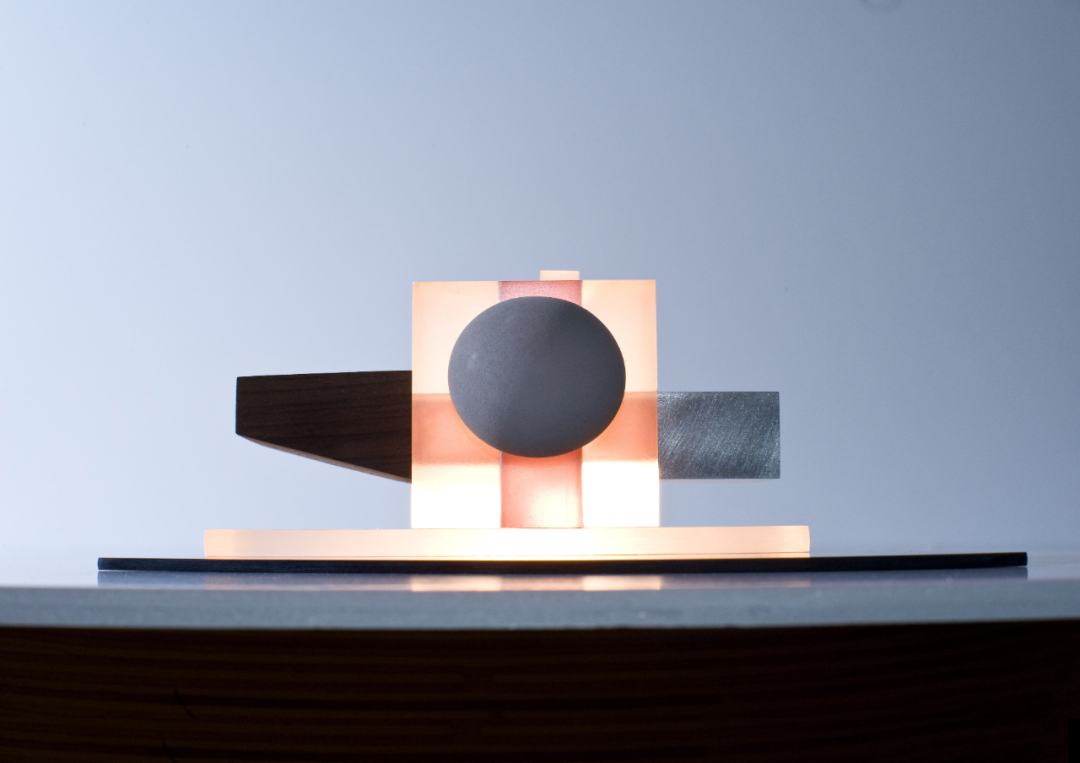
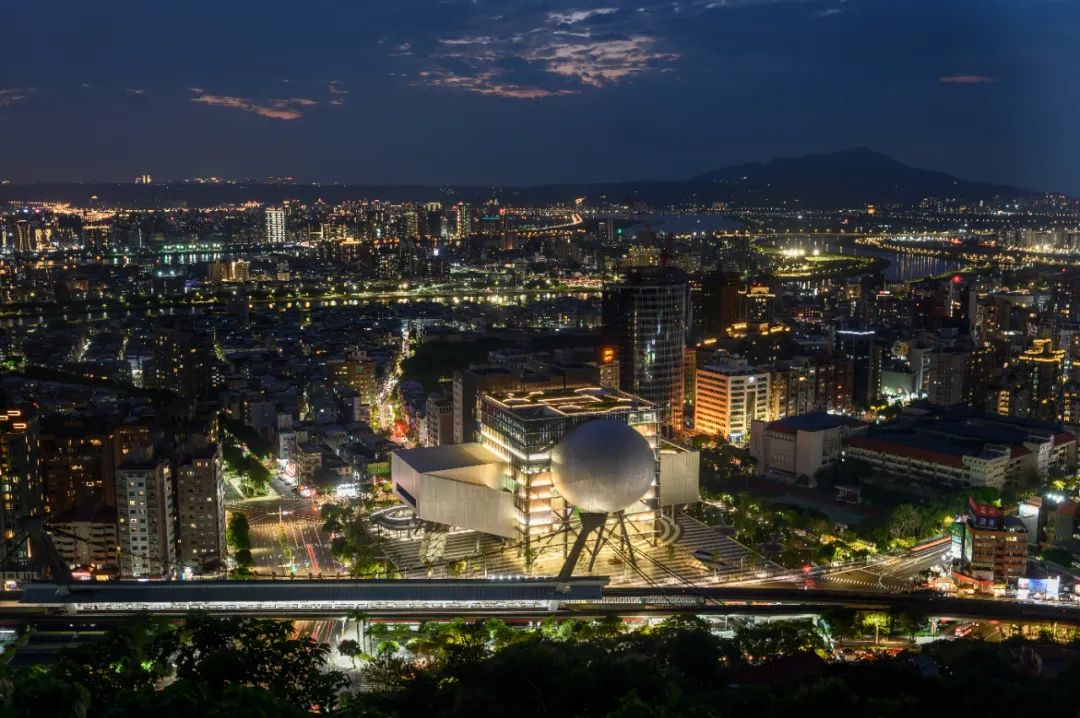
TAIPEI PERFORMING ARTS CENTRE 台北演艺中心
©Frans Parthesius(上)Shephotoerd Co. Photography(下)
联合出品媒体 | Belong波噜昂
特别声明
本文为自媒体、作者等档案号在建筑档案上传并发布,仅代表作者观点,不代表建筑档案的观点或立场,建筑档案仅提供信息发布平台。
13
好文章需要你的鼓励

 参与评论
参与评论
请回复有价值的信息,无意义的评论将很快被删除,账号将被禁止发言。
 评论区
评论区